Fall/Winter 2024



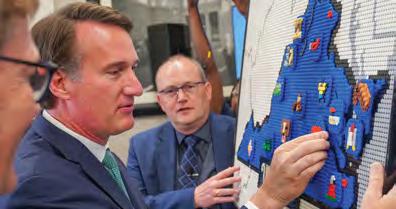
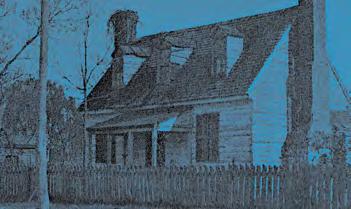
The Williamsburg Bray School Rediscovered page 10
Lord Dunmore’s War: 250th Anniversary page 20
8


Cover: John Murray, Fourth Earl of Dunmore, 1929 (VMHC Collection).
Virginia History & Culture No. 21
Questions/Comments newsletter@VirginiaHistory.org
428 N Arthur Ashe Boulevard Richmond, Virginia 23220 VirginiaHistory.org
804.340.1800
Galleries and Museum Store
Open 10 am – 5 pm daily
Research Library
Open 10 am − 5pm, Monday – Saturday
NEWSLETTER TEAM
Editor
Graham Dozier
Designer/Production
Cierra Brown
Contributors
Jamie Bosket, Danni Flakes, Julie Kemper, Sam Florer, Joann Macenka, Tracy Schneider, Andrew Talkov
EXECUTIVE TEAM
President & CEO
Jamie O. Bosket
Chief Financial Officer
David R. Kunnen
VP for Advancement
Anna E. Powers
VP for Collections & Exhibitions
Adam E. Scher
VP for Guest Engagement
Michael B. Plumb
VP for Human Resources
Paula C. Davis
VP for Marketing & Communications
Tracy D. Schneider
THE VIRGINIA MUSEUM OF HISTORY & CULTURE
Annual Honor Roll of Donors page 29
VIRGINIA HISTORICAL SOCIETY BOARD OF TRUSTEES
Chair
Richard Cullen*
Vice Chair
Carlos M. Brown*
Honorary Vice Chairs
Austin Brockenbrough III
Harry F. Byrd III*
Nancy H. Gottwald
Conrad M. Hall*
Thomas G. Slater, Jr.*
Regional Vice Chairs
William H. Fralin, Jr.
Susan S. Goode*
Gen. John P. Jumper
Lisa R. Moore
Gerald F. Smith*
*Executive Committee
Makola M. Abdullah
B. Marc Allen
Neil Amin
Victor K. Branch*
Charles L. Cabell
Victor O. Cardwell
Herbert A. Claiborne III
William C. Davis
Melanie Trent De Schutter
Joanie D. Eiland
Peter F. Farrell
Victoria D. Harker
Russell B. Harper
Paul C. Harris
C. N. Jenkins, Jr.
Edward A. Mullen
John R. Nelson, Jr.*
Kevin B. Osborne
J. Sargeant Reynolds, Jr.
Xavier R. Richardson
Elizabeth A. Seegar
Robert D. Taylor
J. Tracy Walker IV
Founded in 1831 as the Virginia Historical Society, the VMHC, a private, non-profit organization, is the oldest museum and cultural organization in Virginia, and one of the oldest and most distinguished history organizations in the United States. The museum cares for a renowned collection of more than nine million items representing the far-reaching story of Virginia.
American Democracy and our system of democratic self-government are on full display as we engage in our essential tradition of electing a President of the United States this fall, and as we increasingly take note of the opportunity and promise of America’s approaching 250th anniversary. These milestone moments provide us with a powerful call to action to reflect on our past and invest in our future—a much-needed opportunity to further the study of history and civics. Our nation needs and deserves an engaged citizenry—one informed by a full understanding of our shared past, and one that encourages an awareness of, and commitment to, the rights and responsibilities we share as citizens.
To meet this moment and serve the Commonwealth, the VMHC, through the purposeful work of its John Marshall Center for Constitutional History & Civics, has proudly launched Civics Connects, a free, comprehensive, and classroomready resource thoughtfully designed for Virginia students.
Even before pandemic-related learning loss, civics education had been losing ground for some time. America’s resulting “civics crisis” is evidenced in low standardized test scores and countless recent polls that reveal not only a lack of knowledge about democratic principles and systems but, perhaps even more concerning, an apathy about democratic forms of government. Only about one in three Americans can pass the U.S. Citizenship Test. Less than half of U.S. adults can name all three branches of government. And, perhaps worst of all, about half of young Americans do not believe democracy is preferable to other forms of government.
Civics Connects provides Virginia students with a major new toolkit for inquiry-based exploration and discovery. This first-of-its-kind educational resource portfolio will provide a sweeping foundation of civics, will cover all Virginia standards of learning for civics and economics in the middle grades, and will align with broader national standards. Designed with

significant input from Virginia educators, this robust resource includes lesson plans, interactive slides, classroom activities, and videos that feature Virginia middle schoolers as “civics investigators” visiting the Virginia State Capitol, the VMHC, and other important sites around the Commonwealth—and even the National Archives and The White House—on a quest to understand America’s founding documents and world-changing ideas, its principles of democracy, and our collective responsibilities and rights under the Constitution.
Civics Connects will help ensure that all Virginia middle school students begin their high school careers with essential civics knowledge upon which to build, and from which to inspire, a lifetime of engaged citizenship. We believe it will serve as a national model.
Thank you for joining us in this important work, and for your wonderful support of this special place.
Most sincerely,
Jamie O. Bosket, President & CEO
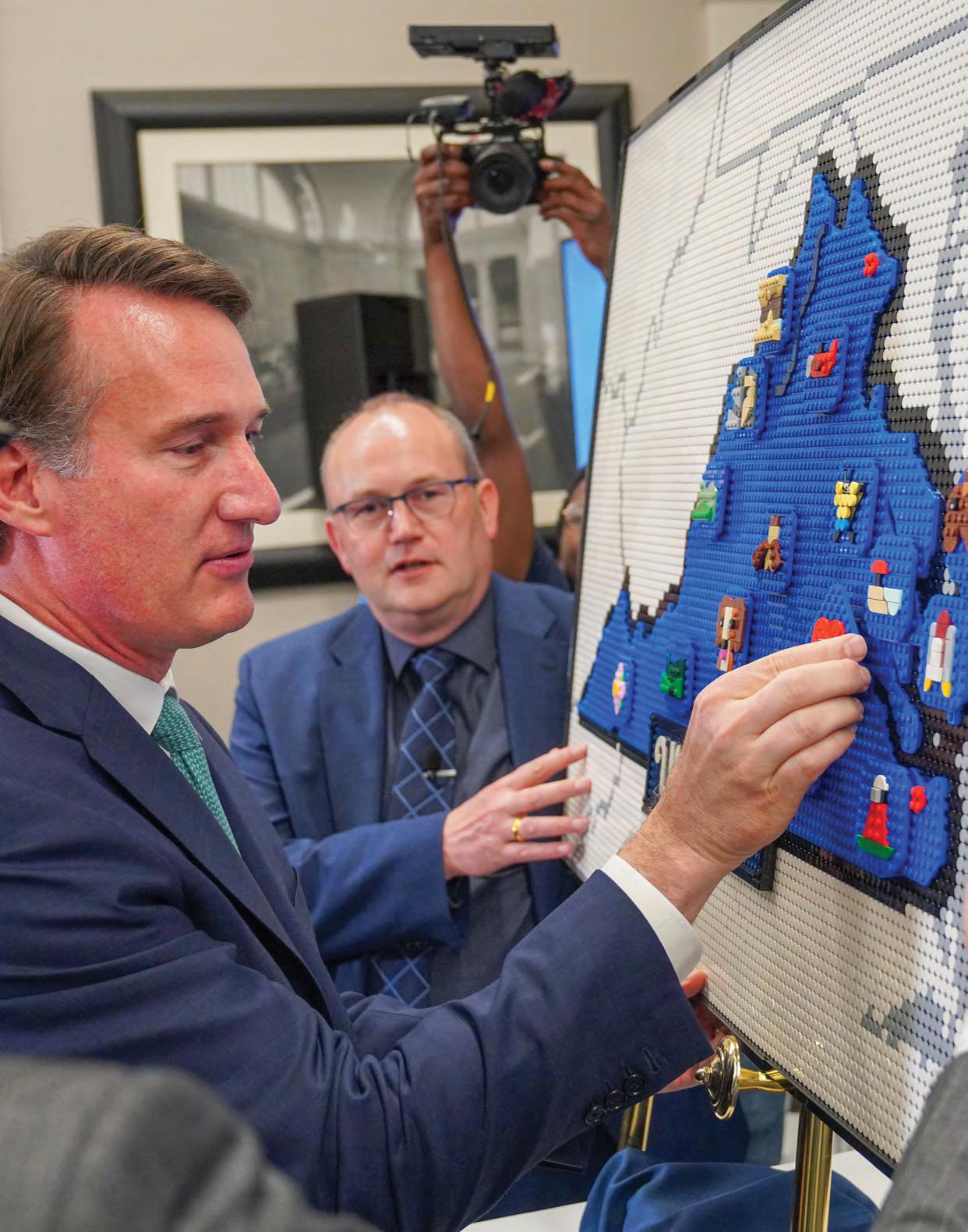

Just as Virginians were settling into the post-World War II economy, Danish carpenter and wood toy maker Ole Kirk Kristiansen took a leap into the industrial world. Despite his family’s concerns, Kristiansen bought a plastic injection molding machine. The famous LEGO® plastic brick is the iconic result.
In 2022, the LEGO Group selected Chesterfield County, Virginia for its new, and only, U.S. manufacturing facility to meet increasing demand on the continent. The VMHC is thrilled to celebrate this historic occasion by hosting Traveling Bricks: An Exhibition Made of LEGO® Bricks.
The LEGO Group is investing a billion dollars in their new presence in Virginia. It is the first LEGO® factory located in the United States in 25 years. The company launched a packing operation in November 2023 with about 250 employees. A larger 340acre facility, scheduled to open in 2027, will be home to a brick manufacturing and packaging plant as well as offices and a warehouse. When complete, the LEGO manufacturing facility will be state-of-the-art. The factory and packaging areas will include efficient molding machines, automatic guided vehicles, self-running sorting machines, and solar panels as a local power source.
The LEGO Group is a privately held company based in Billund, Denmark, and founded by the Kirk Kristiansen family in 1932. Ole Kirk Kristiansen was building houses and furniture when the Great Depression hit Denmark in the 1930s. To keep his small factory and employees going, they made smaller, less expensive items, including ladders, ironing boards, and wood toys. Before long, most of the company’s sales were toys.
In 1947, Kristiansen bought a plastic injection molding machine he had heard about at a toy business convention. The first plastic toys the company made were similar to their wood toys—animals, cars, and blocks. In 1949, LEGO® Automatic Binding Bricks were designed, inspired by similar plastic blocks on the market at the time. The name LEGO Mursten was adopted soon after, with “LEGO” derived from the Danish phrase “leg godt,” meaning “play well,” and “Mursten” meaning “bricks.” It was Ole’s son, Godtfred Christiansen, who evolved the company to what it is today. He envisioned a building blocks system that would be played with long after any particular building set was complete. “Town Plan No. 1,” the first LEGO system of play, was
Glenn Youngkin, Governor of Virginia, Carsten Rasmussen, Chief Operations Officer for the LEGO Group, and Skip Kodak, President, Americas Region, for the LEGO Group, look over a model of the proposed Virginia facility made entirely of LEGO® bricks (Courtesy Office of Governor Youngkin).
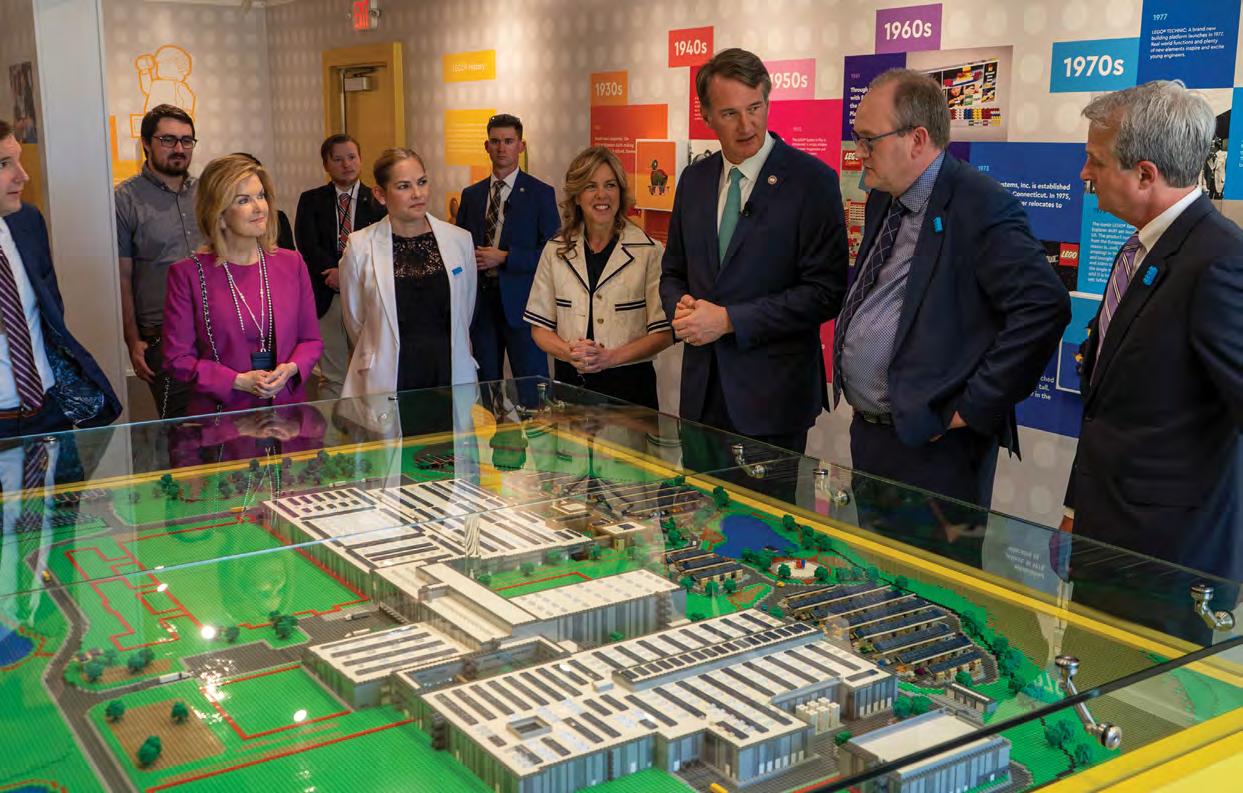
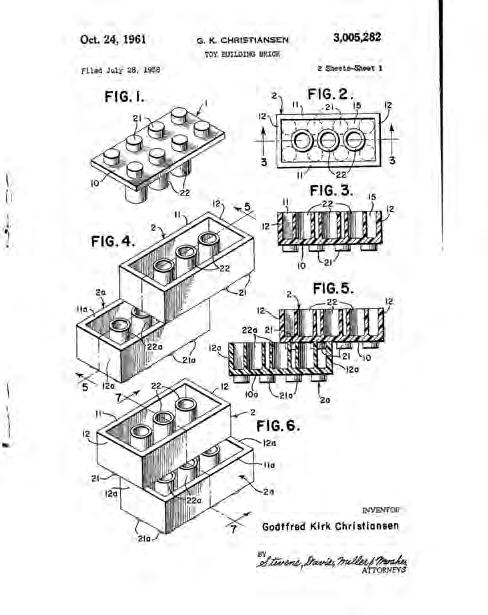
Godfred Kirk Christiansen filed a patent request with the United State Patent Office in 1958. It was approved in 1961 (U.S. Patent Office).
released in 1955. It included bricks for buildings, cars, and trees designed to sit on a board with printed streets.
The next big leap was an improved brick with locking stud and tube design patented in 1958. The design ensured the bricks stay together during playtime. Lagging sales in the late 20th century required a new idea. In 1999, LEGO Group released 13 Star Wars sets, opening a new era of licensed themes that still lead the market today. The company continues to innovate, market, and improve while using the exact same locking stud and tube design.
As the LEGO Group expanded, partnerships for distribution and licensing developed across Europe and in 1960 moved to North America through an agreement with Samsonite. Known best for luggage, Samsonite produced a range of products in the mid-


Brick builder Jame Beute of Northern Virginia created this model of the Kline Kar on display in VMHC’s Commonwealth Hall.
1900s. The company also fabricated LEGO bricks using molds built in Denmark and distributed them though North America. The invention of a larger brick, the
On Display Until January 5, 2025
The VMHC is hosting, Traveling Bricks: An Exhibition Made of LEGO® Bricks. By air, space, land, and water, precisely scaled models bring the history of transportation to life. With more than 100 models constructed of nearly 1 million LEGO® bricks, it is an exploration from miniature cars to a massive RMS Titanic model almost 24 feet long.
In Traveling Bricks, guests can discover connections between the amazing transportation models and Virginia transportation history. The exhibition is the first continental United States appearance of Traveling Bricks—one of the largest exhibits of its kind— and is a must-see experience for every builder and kid-at-heart.

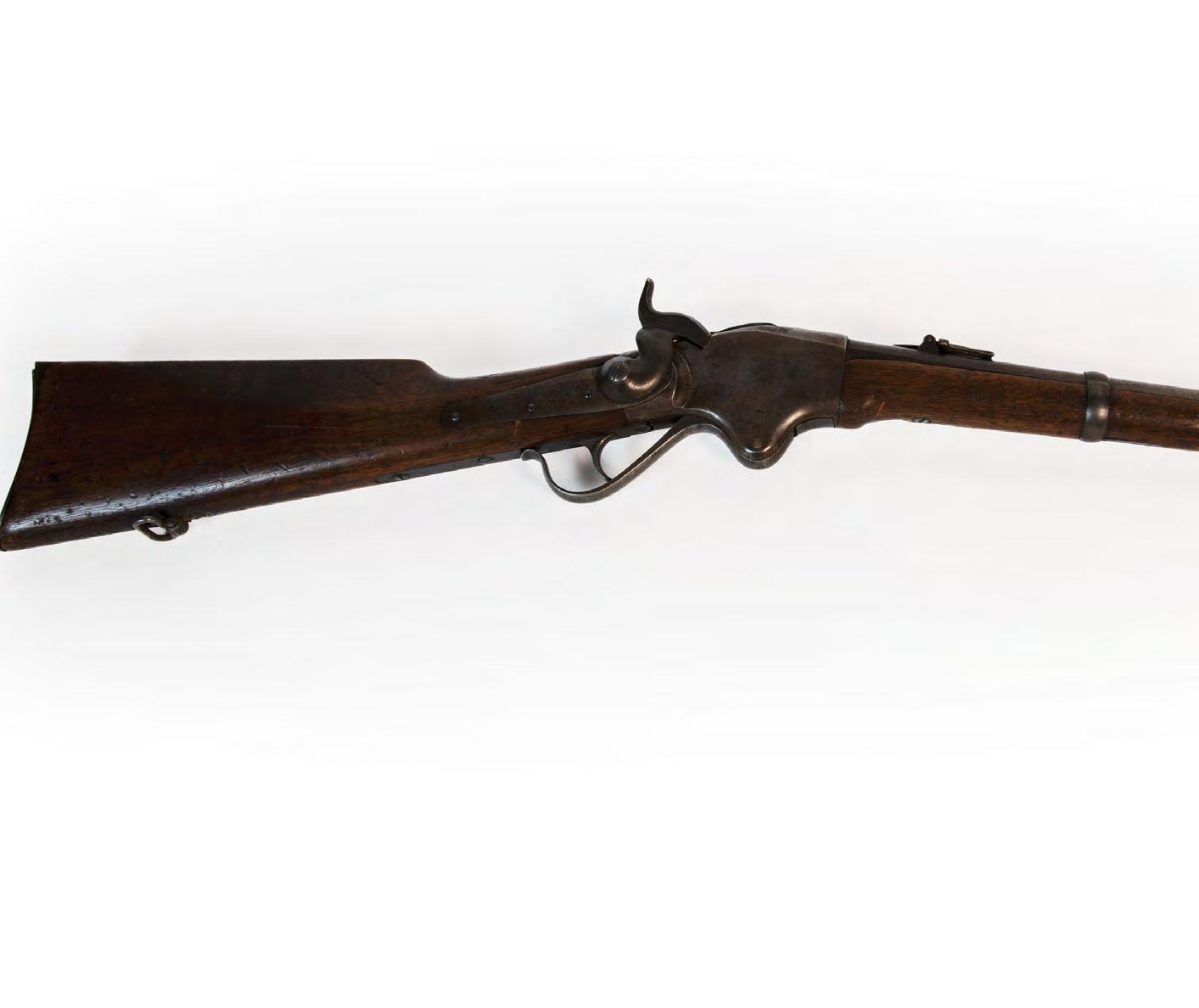
Two days after Virginia’s secession from the United States on April 17, 1861, Elijah Coiner (1834–1915), mounted his horse and departed from his Augusta County home. Alongside more than 60 friends and neighbors, he pledged to serve for one year in the defense of Virginia and, ultimately, the newly formed Confederate states. This group, which styled themselves the “Valley Rangers,” joined other Shenandoah Valley units to form the First Virginia Cavalry. More than 150 years later, Coiner’s arms and equipment, now part of the Virginia Museum of History & Culture (VMHC) collection, provide a glimpse into his military service and reflect broader changes in cavalry tactics during the Civil War.
Historically, cavalry units were prized for their speed, which allowed them to gather intelligence on enemy movements and execute rapid, decisive charges against infantry, artillery, or other cavalry. Elijah Coiner’s sidearms, including his U.S. Model 1860 Light Cavalry Saber and 1851 Navy Colt revolver, were key components of this arsenal, proving crucial in such battles as Brandy Station (June 9, 1863) and Gettysburg, Pennsylvania (July 1–3, 1863). These weapons were designed for close combat, a hallmark
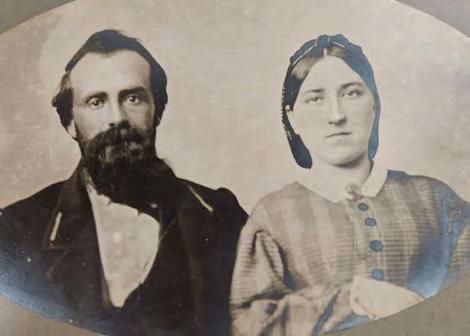
shorter, more maneuverable rifles suited for use on horseback. Coiner’s acquisition of a Spencer Repeating Carbine, a highly coveted firearm manufactured exclusively in Boston, was a significant upgrade. This weapon could fire 14 to 20 rounds per minute, vastly outperforming the infantry’s rate of three rounds per

minute, reflecting the continued transformation of cavalry into more versatile and heavily armed forces.
During a brief respite in January 1864, while the First Virginia Cavalry was camped near Harrisonburg, Elijah returned home for ten days and married Anna Elizabeth “Bettie” Read (1842–1931) of New Market. As the war continued, Coiner was engaged in various campaigns, including efforts to drive United States forces out of the strategic Shenandoah Valley. Following the decisive federal victory at Cedar Creek (October 19, 1864), the opposing armies probed for opportunities to reengage. On November 24, Coiner was wounded in a skirmish near Mount Jackson when a bullet tore through his boot and into his ankle. The back seam of the boot was cut open so that it could be removed. Upon learning of his injury, Bettie traveled seven miles from New Market to bring him back to her family’s home for recovery. Although his wound healed, Coiner walked with a limp for the rest of his life. Coiner did not return to active
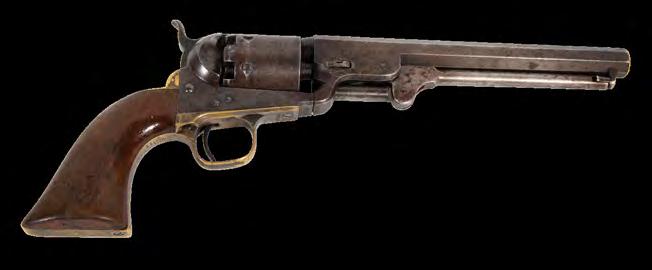

duty. By war’s end, the First Virginia participated in more than 200 engagements, and Elijah was among the 480 members wounded during the conflict.
After the war, Elijah and Bettie settled on the Coiner family farm near Waynesboro, where they raised a family.
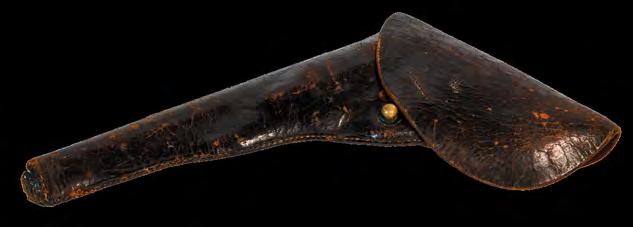
Three generations of the Coiner family helped preserve Elijah’s well-worn arms and equipment—the tangible evidence of his wartime experience. Thanks to the generosity of his great-granddaughter, these items are now part of the Virginia Museum of History & Culture’s extensive collections related to the Civil War era.


The long search for the Williamsburg Bray School ended on a Monday evening in the early summer of 2020.
It was on that day, June 22, that The Colonial Williamsburg Foundation received proof that an unassuming white building that housed William & Mary’s Department of Military Science was actually the original home of an 18th-century school for enslaved and free Black children.
Opinions had been divided on the fate of the school. While some speculated that the building was demolished long ago, others—including scholars at William & Mary and at The Colonial Williamsburg Foundation— suspected that it had somehow survived centuries of change, including being moved in 1930 from its original site to the site of its discovery.
Indeed, it had been hiding in plain sight.
“It was a remarkable find that was literally in front of us, every day,” said Cliff Fleet, president and CEO of The Colonial Williamsburg Foundation.
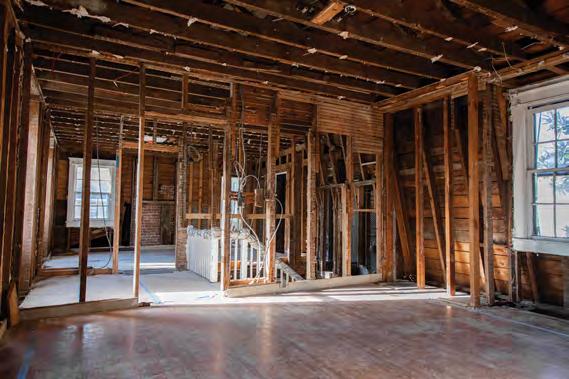
Progress photo of restoration work on the interior of the Bray School, January 18, 2021 (The Colonial Williamsburg Foundation).
Now, four years after tests confirmed that the Williamsburg Bray School had been found, the building—the Foundation’s 89th original structure—is set to open as an interpretive site on November 1.
In February 2020, Matthew Webster, Colonial Williamsburg’s executive director of the Grainger Department of Architectural Preservation and Research, crawled under the white building on the edge of the William & Mary campus and inspected parts of the frame and joists that might be used for dendrochronology, a method of studying tree rings to date buildings.
The results from the Oxford Tree Ring Laboratory in Maryland indicated that the wood had come from trees that had been cut down in the winter of 1759 and the spring of 1760.
These were remarkably precise dates, findings made possible because researchers had been able to take samples from the outside edges of logs, which showed the newest growth rings. And the dates matched precisely with documentary evidence that the Williamsburg Bray School had opened on September 29, 1760.
“We now not only knew that this was the Bray School,” Webster said, “but now we seemingly had a building whose first use had been as a school.”
This discovery has opened avenues of opportunity to explore a more complete history of early America, with complex intersections of slavery and social norms.

“This site in conjunction with many other locations across the region will be used as a critical and necessary location ... for dialogue, research, and scholarship regarding the complex yet compelling story of education, race, and religion in the formation and development of America,” Fleet said during an address in February 2023 when the building was moved from the William & Mary campus to its new home in the Foundation’s Historic Area.
know—were between the ages of three and ten years, and they were taught reading, spelling, and etiquette. Girls received additional instruction in sewing and knitting. Their lessons came from carefully curated religious texts. A set of rules drawn up in 1762 directed the teacher, Ann Wager, to instruct her students “in the Principles of the Christian Religion” and to teach them that “Christians are commanded to be faithful & obedient to their Masters.”
The journey of the building that once housed the Williamsburg Bray School—America’s oldest surviving school for Black children—gave birth to a partnership between Colonial Williamsburg and William & Mary.
Thomas Bray (1656–1730), Founder of the Society for Promoting Christian Knowledge (Cambridge University Library).
Colonial Williamsburg’s preservationists and tradespeople conducted research that informed the reconstruction of the building, and William & Mary launched the Bray School Lab where scholars studied the impact of the school on a community on the cusp of revolution. The lab, located on Colonial Williamsburg’s campus, a short distance from the school for which it is named, is conducting genealogy work, and oral history interviews are helping to shape interpretative programs about the school. The names of 86 of the Bray School’s students are known. The lab hopes to identify more.
The Williamsburg Bray School was funded primarily by a charitable organization in England founded in 1724 by the Rev. Dr. Thomas Bray. The mission of the group, called the Associates of Dr. Bray, was to provide Anglican religious instruction to children of African and Indigenous descent in North America. The group also founded schools in Fredericksburg, Virginia, Newport, Rhode Island, New York City, and Philadelphia.
The Williamsburg school operated for fourteen years, from 1760 to 1774. Some 300 children likely went to the school. The students—whose names, in many cases, we do not
The project has involved many employees from across The Colonial Williamsburg Foundation, from archaeologists to preservationists to curators to those who practice historic trades.
Webster and his team peeled away the 19th- and 20thcentury additions that encased the house. In its lifetime, the building had served as a dormitory for Methodist women in the 1920s and that is likely when the first major additions to the house occurred. Because this coincided with the beginning of the Great Depression—a time when thrift and recycling were both common and necessary—original elements of the 1760 school were reused rather than discarded.

The discoveries included original sections of chair rail, base board, a door, two window sashes, shingles and plaster lath, among others. From this evidence, the team could determine the original molding profiles, construction techniques, and even the absence of paint—and if paint was present, its color.
The fear that stories would be lost to the building’s heavy alterations, Webster noted, were quickly replaced with the elation that the building could willingly reveal its story—a story that could inform its restoration.
Historians once hypothesized that the building was dilapidated and practically uninhabitable at the time children attended classes there. The slaveholders who supported the school, they surmised, seemed unlikely to care about high-quality construction. In fact, in 1769, Robert Carter Nicholas, the school’s trustee and later the treasurer of the colony of Virginia, wrote to the Associates of Dr. Bray that the building was “untenantable.”
But the building itself said otherwise. Untenable, in this case, meant that the structure was small and accommodating 30 students and a teacher would be difficult.
Just like that, the narrative shifted. “His letter was referencing the space, not the conditions,” Webster said, “It goes from a building that was in really bad condition to a brand-new building that these children were actually the first occupants of. It’s a great lesson in research.”
The research has not only changed the understanding of the Bray School but also enhanced insight into other middling homes from the 18th century. Colonial Williamsburg is known for its restoration and preservation of gentry homes, but the 18th-century city included many simpler homes, few of which still stand.
“This was a much more standard type of house in Williamsburg at the time,” said Jenn Wilkoski, Colonial Williamsburg’s Shirley and Richard Roberts Architectural Historian.
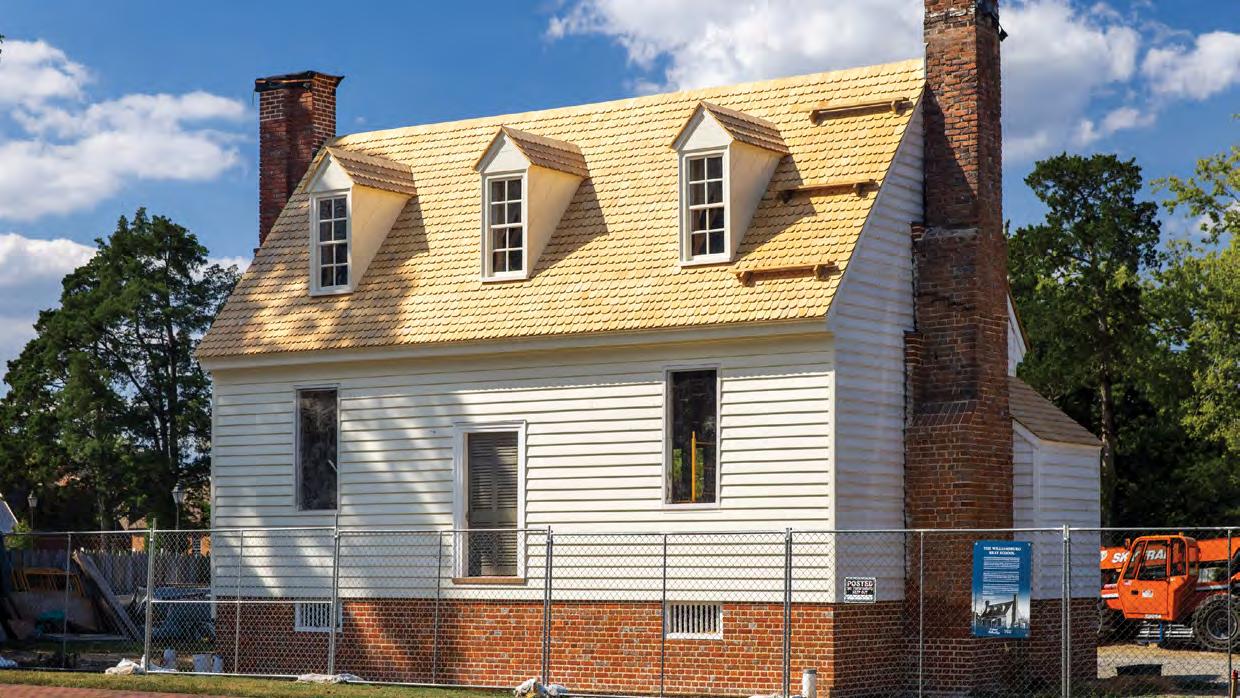
With more research came more clues. Wilkoski’s investigation led her to Colonial Williamsburg’s Special Collections, where she found a sketch of the building made by an architect who visited Williamsburg in the early 20th century, before Colonial Williamsburg was founded. It included a floor plan, elevation, and other details that have informed the reconstruction.
On February 10, 2023, the structure made the short and slow trip from Prince George Street to Francis Street, where it was placed on a new brick foundation and the reconstruction work began in earnest. The non-historic roof line was removed, for example, returning it to its original gable or A-frame shape.
Archaeology, too, has played a role in understanding the building and how it was used.
More than 200,000 artifacts were recovered during four summers of excavations at the Williamsburg Bray School’s original site where for many years a William & Mary dormitory stood—and which will soon be transformed into a new academic building. These include fragments of more than twenty slate pencils, which might suggest that writing
was taught to the Black students, whom school trustee Nicholas referred to in correspondence as “scholars.”
Clay marbles, buried by more than two centuries of plowing and construction, may have been used for arithmetic exercises or perhaps to simply pass the time with children’s games between lessons.
Pieces of pottery and ceramics are reminders that the house served not just as a school but also as the teacher’s home.
As the project moved into later phases, Colonial Williamsburg historic tradespeople added their contributions as more attention was focused on furnishing the interior.
Master Cabinetmaker Bill Pavlak, for example, built a teacher’s desk and John Peeler, a journeyman cabinetmaker, built two tables. The designs of the three pieces were based on originals in the Foundation’s collection that had received a curator’s seal of approval for authenticity. Joiners contributed benches like the ones on which students sat for their lessons. Peter Hudson, a journeyman joiner, preferred fresh rather than dried wood for
the chairs he built, and after a few scouting trips, found what he wanted in Gloucester.
The brickmakers formed thousands of bricks for this project, including some for a second chimney that had to be reconstructed.
One of the most poignant finds was the discovery of a popular text used at the Williamsburg Bray School. Katie McKinney, Colonial Williamsburg’s Margaret Beck Pritchard Associate Curator of Maps and Prints, knew that at least 140 copies of The Child’s First Book were shipped from England to the school—more copies than of any other book.
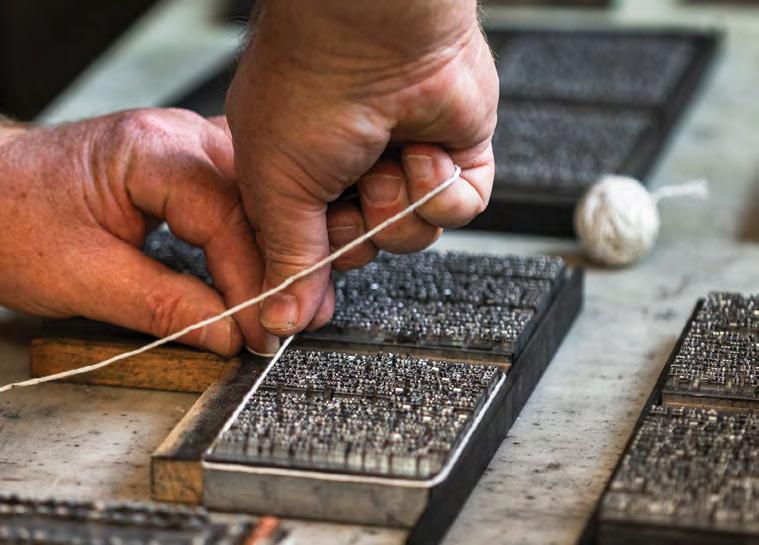
Locating a copy today, however, proved difficult.
“I had nearly given up hope,” McKinney admitted.
But while doing research in Cambridge, England, she came across a reference to the book’s publisher—John and William Oliver. It was enough of a clue to distinguish the book from similar ones and at last, McKinney found a single copy at Library of the Francke Foundation in Halle, Germany. Librarians there scanned the book and that facsimile—down to the printing flaws in the original—became the basis for the 1,000 copies of The Child’s First Book that Peter Stinely, the supervisor of Colonial Williamsburg’s print shop, would create using an 18th-century press. The book is 32 pages, formed from a single sheet that is folded and then stitched together. When the school opens to the public, visitors will be able to see the book and even hold it in their hands.
2024 marks the 250th anniversary of the closing of the Williamsburg Bray School. Ann Wager died in August 1774, and the school ceased to operate, pending
instructions from the Associates of Dr. Bray. It never reopened. The Associates indicated that its support of the schools for Black students was “at present interrupted by the unhappy Disputes between Great Britain and her Colonies, and there being little Prospect of resuming the same till an amicable Accommodation shall take place.”
The Bray School project’s work is supported by a major grant from the Andrew W. Mellon Foundation’s Monument Project.
By Colonial Williamsburg Foundation
The effort to reconstruct the Bray School building is part of The Colonial Williamsburg Foundation’s mission to preserve and restore Virginia’s 18thcentury capital. Innovative and interactive experiences in its Historic Area highlight the relevance of the American Revolution to contemporary life and the importance of an informed, active citizenry. Learn more at ColonialWilliamsburg.org
The museum stays open late for this family-friendly event. Enjoy free admission to the galleries, specials in the Café, access to food trucks, live music, and familycentered activities.
First Fridays made possible with support from Virginia R. Edmunds. First Friday each month 5:00 pm to 8:00 pm
Chocolate Making Demonstrations
Learn how chocolate was made in 18th-century Virginia and sample American Heritage Chocolate! Saturdays in December 11:00 am
Holiday Open House at Virginia House
Kick off the season with a free afternoon of festive fun and see Virginia House decorated for the holidays!
Dec. 15 12:00 pm to 4:00 pm
Free for members!
When Mayor Doug Wilder Ruled Richmond: Strong-Arm Politics in Virginia’s Capital City
By Linwood Norman
Nov. 14 12:00 pm
A Wonderful Career in Crime: Charles Cowlam’s Masquerades in the Civil War Era and Gilded Age
By Frank W. Garmon, Jr.
Dec. 12 12:00 pm
Learn more about upcoming Virginia Journeys locations, landmarks, and dates on page 35.
Join staff on a brief tour of the VMHC’s rare book and manuscript vault, an area off-limits to the general public, to see some of the collection’s unique books, documents, and artifacts.
Tours available the 2nd Saturday & 4th Thursday of the month
Pocahontas Film Festival & Eastern Indian Marketplace
Enjoy three days of films by and about Native people. And shop a marketplace featuring Native artisans selling handmade decor, art, jewelry, apparel, and more. Nov. 22–24 See website for times
SPECIAL LECTURE
The Scientist Turned Spy: André Michaux, Thomas Jefferson, and the Conspiracy of 1793
By Patrick Spero
Author Patrick Spero sheds new light on an incipient American political climate that fostered reckless diplomatic ventures under the guise of scientific exploration, revealing the air of uncertainty and opportunity that pervaded the early republic.
Dec. 5 5:30 pm
Virtual Curator Conversation: Acquisitions Year in Review
Dec. 2 10:00 am
To register and view all of our upcoming events, visit VirginiaHistory.org/Calendar
Build Workshop with LEGO® Bricks
Guided by Ben Edlavitch, a season 4 competitor on Fox’s LEGO Masters competition show, participants will work together to create a sprawling miniature city skyline, showcasing the overlap between LEGO® products, play, and architecture.
Nov. 9 & 16 10:30 am
Movie Screenings During First Fridays
Nov. 1 The LEGO Movie
Dec. 6 The LEGO Batman Movie
Jan. 3 The LEGO Movie 2: The Second Part
A LEGO Brickumentary Screening and Talkback with LEGO Master
Dec. 17 6:00 pm
MARSHALL SCHOLAR SERIES LECTURE
Who’s Your Founding Father?: One Man’s Epic Quest to Uncover the First, True Declaration of Independence By David Fleming
Jan 15
Lafayette Bicentennial Farewell Tour Dinner
Jan 25
SPECIAL LECTURE
A Perfect Frenzy: A Royal Governor, His Black Allies, and the Crisis That Spurred the American Revolution By Andrew Lawler
Feb. 6
Presidents Day Naturalization Ceremony
Feb. 17
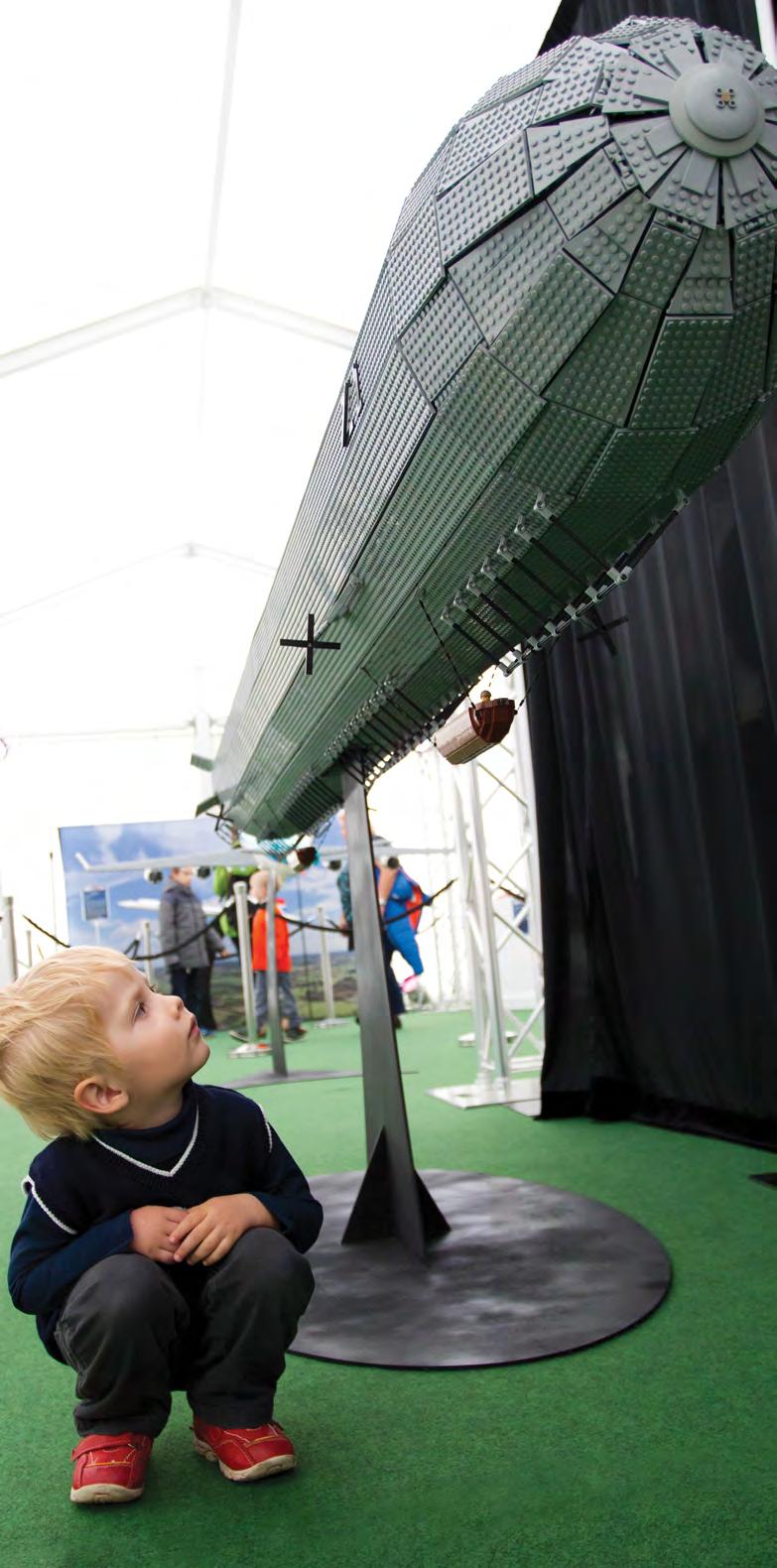
Presenting Sponsors
Exhibition ends January 5, 2024

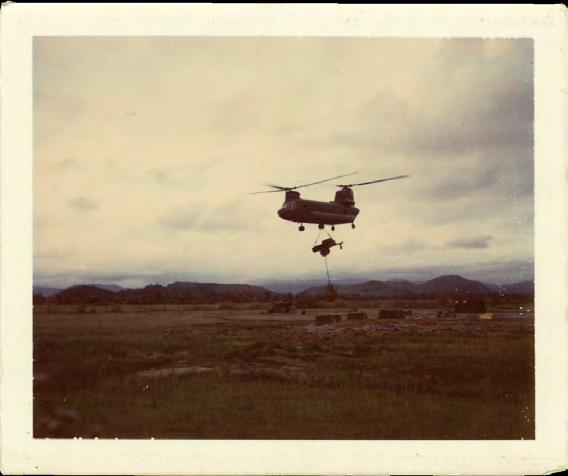
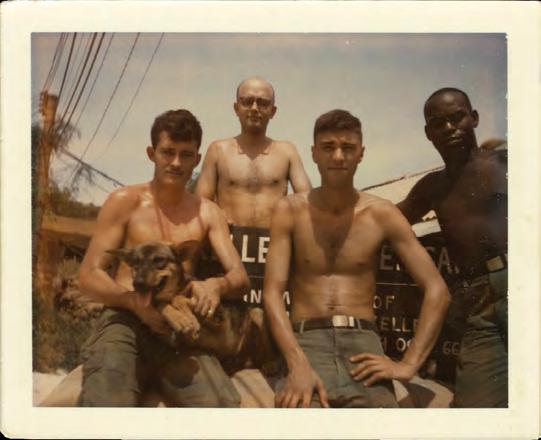
As the 50th anniversary of the fall of Saigon approaches, the Virginia Museum of History & Culture will explore the perspectives and experiences of those who lived through one of the most tumultuous times in American history.
More than 230,000 Virginians fought in Vietnam. Of those service members, 1,490 were killed in the conflict. In the years following the war, the public remained divided over America’s participation and were reluctant to ask questions of veterans, while service members resisted volunteering information and much of the government’s war policy remained classified. Today, Virginia is home to approximately 200,000 Vietnam-era veterans and 60,000 Vietnamese Americans.
A display in the Museum will examine the war’s long-term impact on Virginia’s people, politics, and culture through artifact displays, photographs, historical documents, and new oral histories. Display opens November 23.
The VMHC will release a powerful collection of new oral history accounts from a wide range of perspectives on the Museum’s website and YouTube channel.
The VMHC will debut a new traveling exhibition that will make stops in several cities throughout Virginia, including Virginia Beach and Fairfax.
Learn more at VirginiaHistory.org/VAVietnam
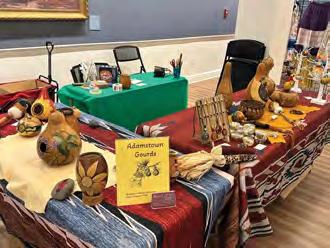


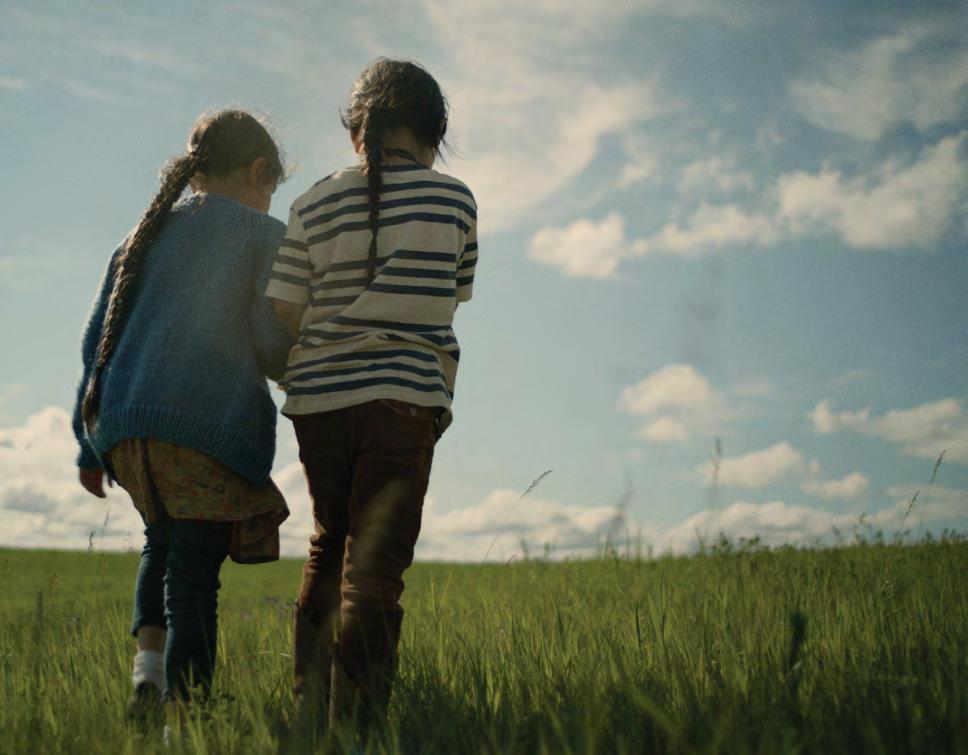
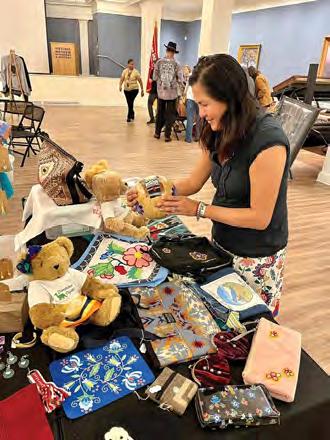
The VMHC is a proud co-host and sponsor of the 2024 Pocahontas Reframed Film Festival. The festival, in its 8th year, raises awareness about Native American language, cultures, and societies through films that share Native American perspectives. It is the only one of its kind on the East Coast, bringing together artists, authors, cineastes, and actors who share a passion for film and features learning opportunities for the entire public.
As part of the Festival, the Tsenacommacah Eastern Indian Marketplace is making its return for the second year, exclusively at the VMHC. Explore a wide range of Indigenous-made goods, including beaded, turquoise, wampum, and silver jewelry, gourds, pottery, apparel, regalia, art, sage, books, and more on Saturday, November 23 and Sunday, November 24 during regular museum hours.
Learn more at VirginiaHistory.org/PFF
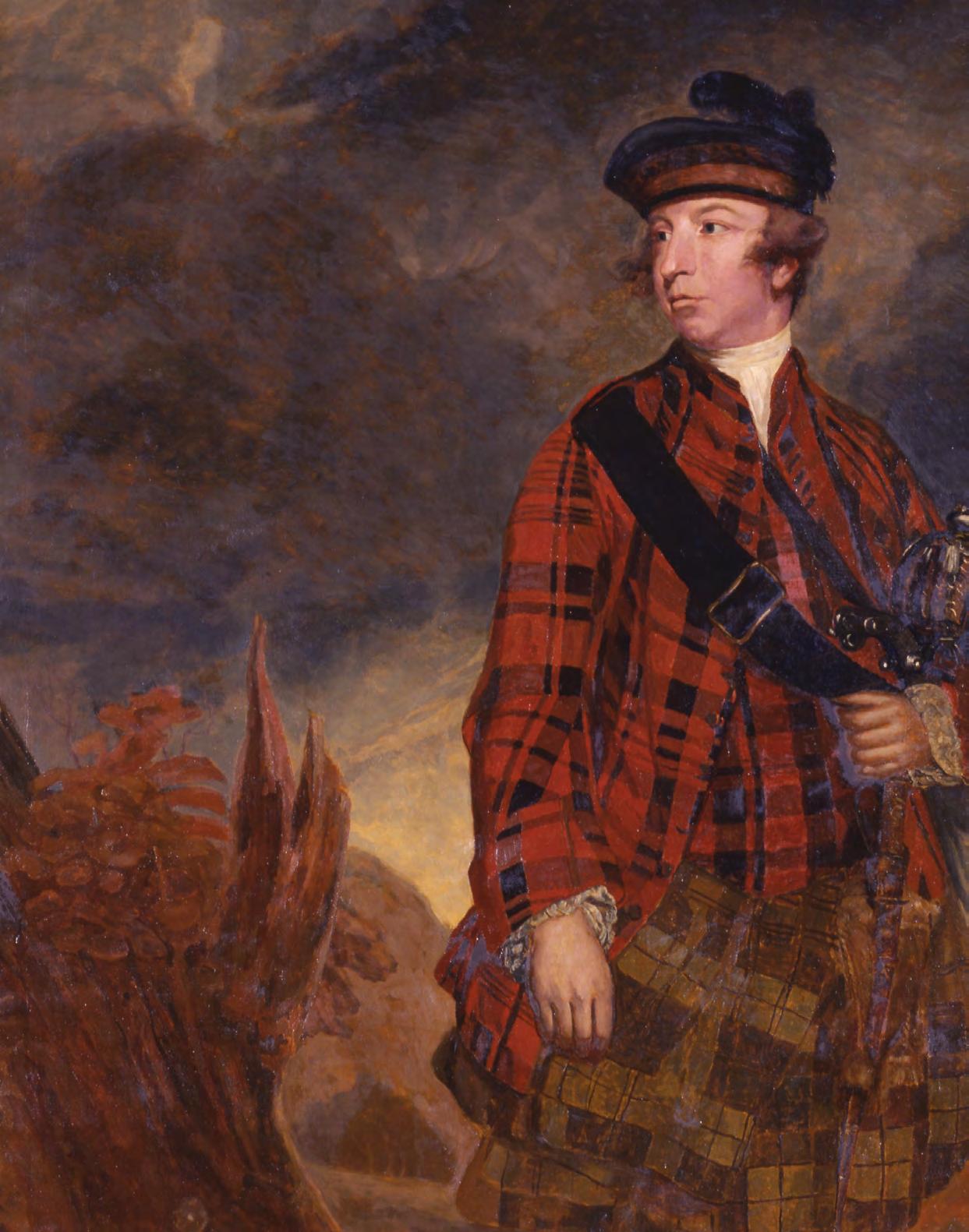

In December 1774, Virginia’s colonial newspapers spread news of a building crisis with British authorities. Publishers included extracts from the First Continental Congress, which met in Philadelphia that fall, and the actions of local Virginia committees enforcing their recently enacted embargo on British goods. In the same newspapers reporting on these revolutionary actions, the publishers included the following public address from the president and professors of William & Mary:
… moved by an impulse of unfeigned joy, [we] cannot help congratulating [you] on such a series of agreeable events... And may you always feel the enlivening pleasure of reading in the countenances around you, wherever you turn your eyes, such expressions of affection as can be derived only from applauding and grateful hearts!
Similar addresses by the colony’s Governor’s Council and Williamsburg’s mayor and aldermen followed. However, these fawning words were not celebrating a revolutionary leader. Instead, they referred to the recent actions of Virginia’s royal governor, John Murray, the fourth Earl of Dunmore. Just seven months later, Dunmore and his family fled Williamsburg in fear for their lives. The same newspapers now labeled Dunmore a would-be murderer, and the authors of those congratulatory addresses began forming a new rival government.
So, what explains this rapid change of opinion? First, it’s important to examine what made Dunmore so popular in the first place. Fought on Virginia’s western frontier over the summer and fall of 1774, what became known as Lord Dunmore’s War pitted the Virginia militia against a confederation of Indigenous people led by the Shawnee. What began as small-scale raids and personal vendettas grew into a full-scale war with thousands of combatants on either side. At its conclusion, Dunmore had led Virginia to its final victory as a British colony, with important ramifications on the formative years of the brewing revolution.
As with most colonial conflicts, Dunmore’s War revolved around control of land. Following the end of the French and Indian War, Britain inherited France’s former colonial holdings in Canada, effectively ending European competition east of the Mississippi River. However, British officials soon realized that did not mean the end of conflict. In 1763, the same year as peace between Britain and France, Native American warriors inspired by an Ottawa war chief named Pontiac
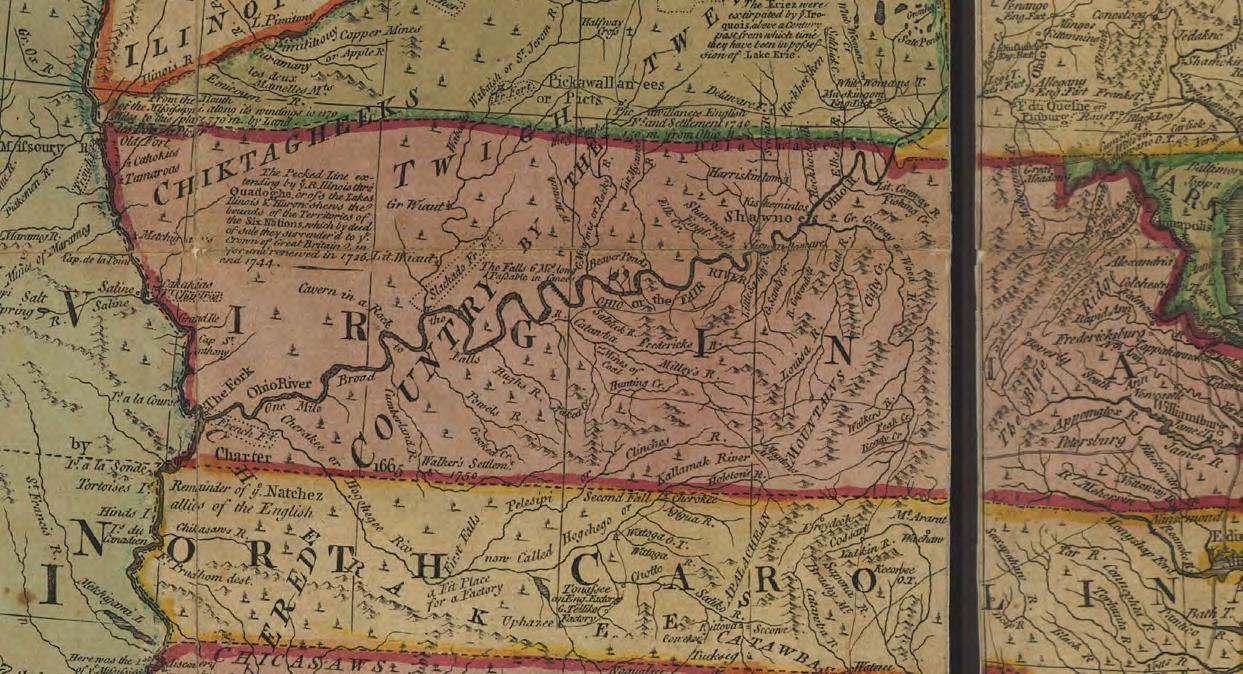
An accurate map of North America. Describing and distinguishing the British, Spanish and French dominions on this great continent; according to the definitive treaty concluded at Paris 10th Feby. (Library of Congress, Geography and Map Division, Louisiana: European Explorations and the Louisiana Purchase).
struck civilian settlements and British army outposts from Michigan to Virginia, killing hundreds of people and exposing Britain’s fragile hold on the frontier.
While Pontiac’s Rebellion eventually petered out, the success of his attacks reinforced the need for British authorities to tightly control dealings with Indigenous people to maintain the peace. The King’s Royal Proclamation of 1763 aimed to accomplish this by forbidding unauthorized settlements west of the Appalachian Mountains and limiting the authority to purchase Native American lands to official representatives of the Crown. Negotiations soon began between Britain’s Indian Department agents and Indigenous leaders. In the 1768 Treaty of Fort Stanwix, representatives of the Haudenosaunee, or Iroquois, Confederacy ceded all lands south of the Ohio River as far west as the mouth of the Tennessee River. In a series of treaties between 1768 and 1772, Cherokee
leaders ceded their claims to lands south of the Ohio River as far west as the mouth of the Kentucky River. In exchange for these lands, Crown authorities paid the tribes large sums of trade goods and promised to restrict settlers from crossing these boundary lines.
However, European conceptions of land ownership did not fully translate to Indigenous societies. As the dominant Native American political and military entity in the Mid-Atlantic and New England, the Haudenosaunee claimed control over the Ohio River Valley. The Cherokee, who were the dominant power in the Southeast, held similar claims to the region. However, neither the Haudenosaunee nor the Cherokee meaningfully consulted the people who actually lived on these lands during negotiations. These tribes included the Shawnee, Western Delaware, and Mingo, all of whom resented the Iroquois and Cherokee to varying degrees and considered the lands south of the Ohio part
of their own territories. When British officials concluded their various treaties with the Haudenosaunee and Cherokee, they believed they now held full legal rights to the land, but competing claims of sovereignty meant significant numbers of Native Americans considered the British encroachments as illegal and unjust, creating conditions ripe for misunderstanding and conflict.
Following the treaties, colonial officials were flooded by land claims from French and Indian War veterans, land speculation companies, and members of Virginia’s elite, all of whom saw new opportunities to settle on or sell western lands. These speculators included George Washington, who traveled through the area in the fall of 1770, scouting out the best lands and acquiring more than 20,000 acres along the Ohio River and its tributaries. Dunmore admitted to seeking land himself, part of the reason he toured the region in the summer of 1773.
It was under these circumstances that tensions mounted. Throughout the early 1770s, instances of violence between settlers and Indigenous groups increased in frequency and intensity as more colonists moved into the region. Raiding parties on both sides killed men, women, and children, tortured each other, and took captives. Native people attacked settlers they perceived as encroaching on their lands, while colonists sought revenge for perceived threats or the loss of loved ones. This low-level warfare created an unending cycle of violence. Rumors also began to spread of a wider conflict involving Cherokee warriors combining forces with the Ohio tribes. By the spring of 1774, scores of settlers abandoned their homes or “forted up” by moving into the fortified homes of neighbors.
This atmosphere of frontier fear and violence pressured Dunmore to take stronger actions to protect his subjects. By June, Dunmore approved plans to raise a large force of militia around the Forks of the Ohio at Fort Pitt, modern-day Pittsburgh, in preparation for war. He followed up on these
orders by deciding to return to the region himself to investigate reports of attacks and, if necessary, lead the military expedition to stabilize the region.
As war clouds loomed, diplomatic efforts intensified. Crown officials called meetings with representatives of the Iroquois Confederacy, Western Delaware, and Cherokee, requesting they stay out of the conflict and promising to abide by the promises of earlier treaties. These efforts paid off, ensuring Virginia would only be facing the Shawnee and Mingo tribes in the coming conflict.
By mid-July, Dunmore arrived in Winchester, where he ordered the frontier counties to fully mobilize their militias and launch a punitive expedition against the Shawnee
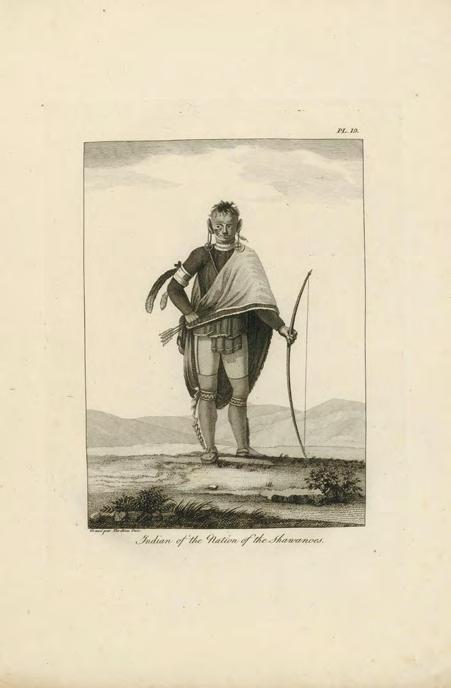
Indian of the Nation of the Shawanoes, 1826 (John Carter Brown Library).
and Mingo settlements north of the Ohio River. This coordinated assault would consist of two wings; Dunmore would lead the right wing from Fort Pitt down the Ohio River where it would rendezvous with the left wing approaching down the Kanawha River to its confluence with the Ohio. Once the two wings joined forces, this combined army would attack the Shawnee villages along the Scioto River. The goal of the expedition was not to seize any new lands, but to inflict enough damage to the Shawnee and their allies that they would accept the boundaries agreed to in earlier treaty negotiations and cease their raids against settlers south of the Ohio.
To lead the southern wing of the army, Dunmore tapped Colonel Andrew Lewis. Settling in Augusta County after immigrating from Ireland, Lewis became a surveyor on Virginia’s frontier. During the French and Indian War, George Washington appointed him as one of his top lieutenants and Lewis represented Virginia’s interests in the treaty negotiations with Native Americans that followed the end of the war.
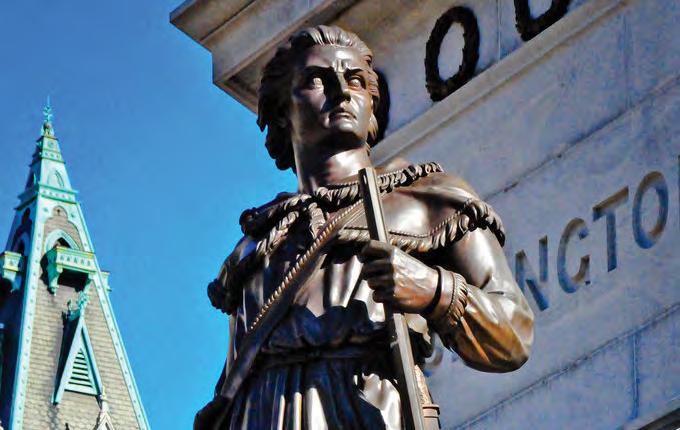
By early September, Lewis had gathered more than 1,000 men, primarily from Fincastle, Augusta, and Botetourt counties, and began the laborious march toward the Ohio River, more than 140 miles away. To facilitate the transportation of enough supplies to feed such a force, his men had to hack a path through the wilderness, reducing their progress to just 5 to 6 miles a day for much of their journey. By early October, his army arrived at the mouth of the Kanawha River where it empties into the Ohio. There, at a place called Point Pleasant, Lewis encamped while awaiting news from Dunmore.
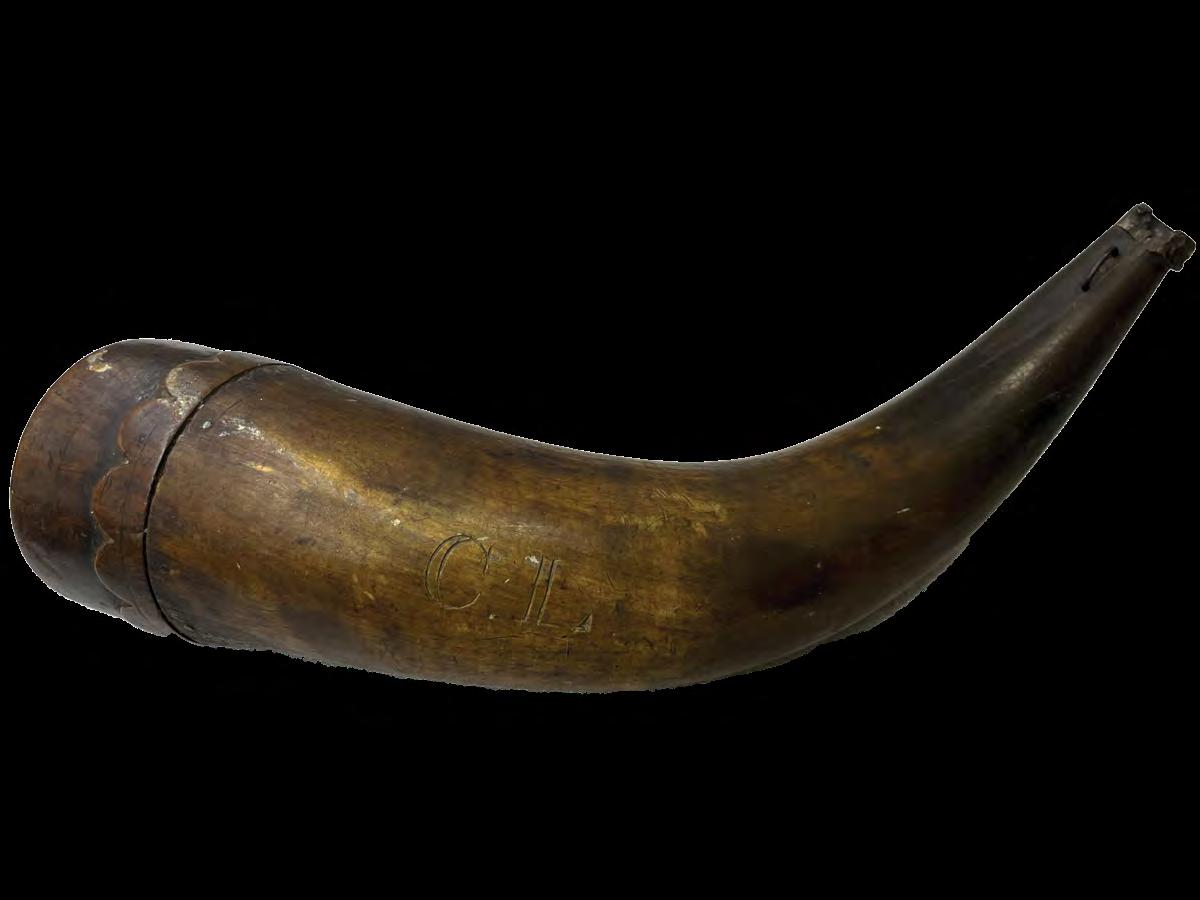
Powder Horn, Col. Charles Lewis (1736-1774; brother of Andrew Lewis), Second half 18th C. (VMHC Collection).
At the same time as the colonial armies mobilized, the Shawnee gathered their forces. The Shawnee’s principal war leader was a man named Hokoleskwa, or Cornstalk. Over the preceding year, Cornstalk tried to restrain the younger, more militaristic members of his tribe, but now that the Virginia militia bore down on their homeland, he advocated for a full-scale attack. By early October, he had gathered roughly 800 warriors, primarily from Shawnee and Mingo communities, but including independent bands of Delaware, Ottawa, Miami, and Wyandot, and planned to attack the two wings of Virginians in detail before they could unite.
In the early morning hours of October 10, 1774, Cornstalk’s men approached Lewis’s encampment at Point Pleasant, hoping to surprise the Virginians
before they had an opportunity to mount an effective defense. When a militia hunting party stumbled across the approaching Shawnee, they were able to return to camp and raise the alarm. Soon, the battle raged in the broken forests along the riverbanks. Although Cornstalk’s forces had the initial advantage of surprise, the Virginians quickly recovered and began to push the Shawnee back. By evening, realizing their attack had failed, Cornstalk and his men withdrew across the Ohio. When the smoke cleared, 75 Virginians lay dead and 140 more were wounded. Among the casualties was Col. Lewis’s younger brother Charles, mortally wounded early in the fight. Although the Shawnee evacuated most of their killed and wounded, observers estimated they lost a similar number of warriors.
Following the Battle of Point Pleasant, Lewis maintained his position on the Ohio and prepared to continue the expedition. Meanwhile, Dunmore’s right wing, with more than 1,000 militia, advanced to establish a fortified camp just a few miles from a large Shawnee town. When Cornstalk’s attack against Lewis failed, he realized his people’s homeland faced destruction and agreed to meet with Dunmore to discuss peace. At the subsequent Treaty of Camp Charlotte, the governor presented relatively lenient terms to the Shawnee. They agreed to release all prisoners captured during recent raids, return stolen goods, and recognize the boundary of the Ohio River as stipulated by earlier treaties. After the treaty negotiations concluded, Dunmore dismissed most of the militia, leaving a small garrison at Fort Pitt to ensure the peace held. Following his victory, Norfolk merchant James Parker commented, “[Dunmore] is as popular as a Scotsman can be amongst weak prejudiced people.”
Virginia’s backcountry, while geographically isolated, remained tuned in to the colony’s wider political atmosphere. On November 5, 1774, before heading home after their successful campaign, a group of Dunmore’s militia officers gathered at an outpost called Fort Gower, as the Virginia Gazette later published,
“for the Purpose of considering the Grievances of British America.” The men agreed to two resolves. The first declared their allegiance to King George III but maintained their commitment to the “Defense of American Liberty, and for the Support of her just Rights and Privileges … when regularly called forth by the unanimous Voice of our Countrymen.” The second praised Dunmore for his recent leadership during the war. The Fort Gower Resolves demonstrated colonists growing American identity, their openness to use force to defend that identity, and Virginians’ complicated loyalties as the colony slipped closer to revolution.
Lord Dunmore’s War had important ramifications for the early years of the Revolution. While Dunmore led the militia in Virginia’s backcountry, revolutionary leaders met to elect representatives to the First Continental Congress. Dunmore’s absence from Williamsburg meant he was unable to inform his superiors in London of Virginians’ depth of revolutionary feelings until he returned to the capital in December. This put London’s understanding of the political situation in Virginia, its largest and wealthiest American colony, a full six months behind the pace of events. Furthermore, peace between Virginia and the Shawnee held throughout the first two years of the war, allowing Virginia to concentrate its resources on ejecting Dunmore from the colony and establishing an independent government. Many of Dunmore’s former officers soon found themselves leading these efforts, most notably Dunmore’s secondin-command, Andrew Lewis. In July 1776, Lewis, then a Continental Army Brigadier General, commanded the forces that permanently forced Dunmore from Virginia.
After being hailed as a hero by Williamsburg’s elite in the winter of 1774, what made Dunmore so hated that he felt the need to flee for his life seven months later? The events of the following spring would soon tell.

THE OFFICIAL 2024 VIRGINIA HISTORY ORNAMENT
This year’s Official 2024 Virginia History Christmas Ornament features a moonlit, holidaysleigh ride through a blanket of freshly fallen snow to Natural Bridge, one of the Commonwealth’s most iconic landscapes, with its 200-foot tall, limestone archway carved by the flowing waters of Cedar Creek. Taking inspiration from paintings of Natural Bridge housed in the Virginia Museum of History & Culture’s extraordinary collection, the ornament also commemorates the 250th anniversary of Thomas Jefferson acquiring the site in 1774.
The VMHC is committed to combating the current crisis with civics education in many forms.
In addition to having recently launched Civics Connects, a major, statewide civics education program for middle grade students, the museum was proud to host two important local civic events this fall. The Richmond Mayoral debate was held on October 15 in partnership with Richmond First and WTVR. A forum for Richmond City Council candidates was held on October 9 in partnership with The League of Women Voters, Richmond Metro Area. The museum believes that fostering open, public debate gives constituents the opportunity to assess each candidate, to understand their ideas and ideologies, and to take part in our democracy by casting their vote.

President & CEO Jamie Bosket was elected to the governing board of the American Association for State and Local History (AASLH) composed of national leaders in the field of public history. AASLH, the only comprehensive national organization dedicated to state and local history, supports the field of public history through advocacy, professional development, original field-wide research, publications, and other crucial professional resources.
The VHMC was recently awarded two significant accolades for educational programming.
The National Endowment for the Humanities awarded the VMHC a $170,000 Landmarks grant to support teacher workshops focused on Virginia’s role in the American Revolution for educators from around the country.
The Center for Interactive Learning and Collaboration awarded the VMHC the 2024 Pinnacle Award in recognition of the museum’s outstanding distance learning program for K-12 students for the eleventh year.




Based on Fiscal Year 2024, unaudited operating results; intended only as estimates for purposes of an annual overview.
304M+ media impressions
1M+ website visits
Member Mondays at Virginia House
Spring Garden Party at Virginia House
Holiday Reception at Virginia House
Virginia Journeys
Travel Program
Virtual Curator Conversations Curator Tours
State of the Museum
Julia Child: A Recipe for Life Member Preview
Corporate Member Reception
IN-PERSON & VIRTUAL PROGRAMS
JULIA CHILD COOKOFF
EVENING
VIRGINIA
TEACHER
HOMESCHOOL
SENSORY
VIRGINIA
VIRGINIA
VIRGINIA
BECOMING
NATURALIZATION
COLLECTIONS UP CLOSE CREATED EQUAL FILM SERIES
HISTORY NOTES
VIRGINIA HISTORY DAY
BREWING IN THE BLACK COMMUNITY
TRUNK OR TREAT
HISTORY BLOOMS
HISTORY MATTERS SYMPOSIUM
BOSTON TEA PARTY 250TH
PARTNERS (A Sampling)
Afro-American Historical and Genealogical Society of Greater Richmond
Asian American Society of Central Virginia Black Judaic Heritage Center
Coalition for Justice Blacksburg
Coming Together Virginia
Cristo Rey
Diversity Richmond
Fredericksburg Area Museum
Girls for A Change
Hear2Hear
Initiatives of Change
Links Incorporated
MCV Foundation
National History Academy
Radio IQ
Radio Poder
Richmond National Battlefield Park
Richmond Public Library
Richmond Region Tourism
Sacred Heart Center
The Community Foundation
Virginia Museum of Fine Arts
Virginia Public Media
Virginia Opera
Virginia Tech
Virginia Tribal Education Consortium
$100,000+
Blandford Rees Foundation
Mr. and Mrs. Austin
Brockenbrough III
Mr. and Mrs. Harry F. Byrd, III
Cabell Foundation
Beirne Carter Foundation
Mary Louise Chrisman
Charitable Trust
Mary Louise Chrisman
Family Trust
Community Foundation for a greater Richmond
Melanie Trent De Schutter and Melanie Trent
Family Foundation
Goode Family Foundation and David, Susan, Christina, and Martha Goode
June H. Guthrie Foundation
Conrad Mercer Hall
Brenton S. Halsey^, Lindsay
Graham Halsey^, and Halsey Family
Russell and Susan Harper
Herndon Foundation
McGuireWoods
Lisa and Bill Moore
Katherine and Jack Nelson
William and Ann Oppenhimer
Anne Mullen Orrell
Charitable Trust, Bank of America, N.A., Trustee
Mary Morton Parsons Foundation
Red Gates Foundation
Virginia Sargeant
Reynolds Foundation
Mr. and Mrs. E. Claiborne
Robins, Jr.
Dr. Pamela K. Royall
Mr. and Mrs. Gerald
F. Smith, Jr.
Helen Marie Taylor Charitable Foundation, Inc.
Bob and Lynn Taylor
Mr. and Mrs. J. Tracy Walker IV
Weinstein Properties
We gratefully acknowledge the support of all donors to the Virginia Museum of History & Culture (VMHC). Donors with cumulative giving of $250 or more during our most recent fiscal year 2024 (July 2023 – June 2024) are recognized below. Donor-advised funds of the Community Foundation for a greater Richmond are indicated by (*). Deceased donors are indicated by (^).
$50,000 – $99,999
American Electric Power Foundation
H. Furlong Baldwin and Summerfield Baldwin, Jr. Foundation
Aggie and Richard Cullen and Cullen Family Fund*
Dominion Energy
Virginia R. Edmunds and Virginia Edmunds
Donor-Advised Fund
Farrell Family and Anne Garland Farrell
Peter and Christie Farrell
Florence Bryan Fowlkes and Florence Bryan Fowlkes Fund*
Gen. and Mrs. John P. Jumper
Loupassi Family Mars, Inc.
Virginia Law Foundation
Windsor Foundation
$25,000 – $49,999
E. Rhodes and Leona B. Carpenter Foundation
Dr. and Mrs. Charles C. Chadbourn III
Chesapeake Corporation Foundation Fund*
CultureWorks, Inc.
Mr. and Mrs. William H. Fralin, Jr.
Bryan Hagen
M. Buie Harwood
Albert P. Hinckley, Jr.
Pam and Bill O’Connor
Mrs. Chiswell D. L. Perkins and Perkins Fund*
R.E.B. Foundation*
Mary S. Doss, Martha S. Pellington, Virginia H. Spratley, and Virginia H.
Spratley Charitable Fund*
Estate of George G. W. Stoner
Barbara J. Thalhimer and William B. Thalhimer, Jr. Family Fund*
Estate of Donald H.
C. Timberlake
TowneBank Richmond
Virginia Humanities
Wall Foundation
Whiting-Turner Contracting Company
$10,000 - $24,999
Atlantic Union Bank
Bank of America Charitable Foundation
Mr. and Mrs. David Beran
Laura H. Boland
Brockenbrough
Dr. Tamara Charity-Brown and Carlos M. Brown
Mr. and Mrs. Charles L. Cabell
Elisabeth Reed Carter
Charitable Lead Trust
Charles Fund, Inc.
George D. Dill Family Foundation
Margaret Massie Disharoon
Charitable Lead Trust
Thomas L. Disharoon
Charitable Lead Trust
Helen E. Dragas Foundation
John W. Edmonds IV
Louise and George Freeman
Michelle Gluck and John McGurl and Michelle Gluck Fund
Gray Holdings, LLC
Hamilton Beach Brands, Inc.
Wilbur Moreland Havens
Charitable Foundation
Katharine and Eugene Hickok
Mr. and Mrs. Linwood A. Lacy, Jr. and Constance C. and Linwood A. Lacy, Jr. Foundation
Mars Foundation
Massey Foundation
Anna Baldwin and Gregory Evers May and May
Charitable Fund
Mr. and Mrs. William H. Mears
Matthew and Genevieve
Mezzanotte Foundation, Bank of America, N.A., Trustee
General and Mrs.
Richard B. Myers
National Endowment for the Humanities
Norfolk Southern Foundation
Moses D. Nunnally, Jr. Charitable Trust
Anne Carter and Walter R. Robins, Jr. Foundation
Paul D. Ross, Jr.
Mr. and Mrs. Everett C. Sherrill
Mr. and Mrs. Thomas G. Slater, Jr.
Slatten-MacDonald Fund*
Mr. and Mrs. Fred T. Tattersall and Fred T. Tattersall Fund*
Judy and Marshall Taylor
Universal Leaf Foundation
Virginia Tourism Corporation
Linda M. Warren
René Wenleder
G. Michael Wildasin
The Hon. and Mrs. Glenn Youngkin and Suzanne and Glenn Youngkin Fund
$5,000 - $9,999
A. Marshall Acuff, Jr.
John B. Adams, Jr.
Elizabeth and Tom Allen and Clovelly Foundation
Melody Barnes and Marland Buckner and Barnes Buckner Family Fund
Mr. and Mrs. J. Read Branch, Jr., JR and JD Branch Family Fund, and Overton and Katharine Dennis Fund
Lisa-Margaret S. Bryan and L.S. and J.S. Bryan Fund*
Elizabeth D. Camp, P. Douglas Camp IV, and Ruth Camp Campbell Foundation
Warren Fulton Chauncey Chrisman Family Foundation
Louise B. Cochrane
Charitable Foundation
Mr. and Mrs. William C. Davis
Joanie Eiland and Randy Laird Garden Club of Virginia
Carolyn H. Garner and
Thomas F. Garner, Jr. and Dr. and Mrs. William V. Garner
Mrs. Martin L. Giles and Martin L. and Patricia H. Giles Fund*
Mr. and Mrs. Stephen M. Goddard and Stephen M. and Cheryl G. Goddard Family Fund*
Hamilton Family Foundation
Mr. and Mrs. Richard K. Hines
Emily S. and Coleman A. Hunter Charitable Trust
The Hon. C. N. Jenkins, Jr. and Dr. Pamela Royal Jenkins and Pamela Royal Jenkins and C. N. Jenkins, Jr. Fund*
Kip Kephart Foundation
James W. Klaus
MCV Foundation
Dr. Jan Meck
Charlotte M. Minor and Charlotte and G. Gilmer
Minor, III Charitable Fund
Charles Stewart Mott Foundation
Jennifer and Edward Mullen
NewMarket Corporation
Family of Harry Frazier, III and Oakenwould Fund*
Kevin and Theresa Osborne
Donald Pomplun
Reed Smith LLP
Mr. and Mrs. Thomas W. Reedy and TNJR Charitable Fund
Helen and Taylor Reveley
Rock Foundation
William and Elizabeth Seegar
The Hon. John W. Snow and Snow Foundation
Society of the Cincinnati in the State of Virginia
Ruth K. Stotts
Marcia and Harry Thalhimer
Universal Leaf Tobacco Company, Inc.
University of Richmond
Mr. and Mrs. Larry Wetsel
$2,500 – $4,999
B. Marc and Shannon
Allen and Allen Fund
Appalachian Power
Sarah Arenstein Levy and Arenstein Family Fund*
Wendy and John Asbury and John and Wendy Asbury Fund
Bartlett Tree Experts
Helen and David Bernd
Susan S. Bogese
Jamie and Emily Bosket
Margaret and Al Broaddus
Dr. and Mrs. Donald S. Brown
Byrd Family Foundation
Mary Ann DeTrana
Estes Foundation
Mr. and Mrs. Robey W. Estes, Estes Express Lines of Richmond, and Estes Express
Lines Charitable Fund
Carol and Carter Fox and Carol and Carter
Fox Family Fund*
Page S. Frischkorn
Joyce S. and William R. Gibbings
Mr. and Mrs. William H. Goodwin, Jr. and Commonwealth Foundations
Allen C. Goolsby III
Nancy and Bruce Gottwald
Helen I. Graham
Charitable Foundation
Betsy and Jim Greene and Jim and Betsy Greene
Charitable Fund
Victoria D. and Drew
Alan Harker
Kiwi and Landon Hilliard and Hilliard Family DAF
Hunton Andrews Kurth LLP
Mr. and Mrs. Edward Jennings and Franklin P. and Arthur W. Perdue Foundation, Inc.
Mr. and Mrs. Van Dyke Jones II
Mr. and Mrs. Ralph C. Joynes
Alex Kershaw
Mr. and Mrs. Luther Kissam
IV and Kissam Family
Charitable Fund
Kiwanis Club of Richmond
Philip W. Klaus, Jr., Sandra L. Mihaloff, and Nathalie L.
Klaus Charitable Lead Trust
Susan B. Kremer
Dr. and Mrs. John Manzari and Sharon L. and Jack A. Manzari Fund
The Hon. Elizabeth A. McClanahan
Robert N. McKenney
Kathleen Markowitz, John and Diana Markowitz, and Thomas M. Moore
Charitable Endowment*
National Society Daughters of Colonial Wars, Inc.
Noland Memorial Foundation
Karen Palen and J. John Palen
Mr. and Mrs. Richard E. Posey and Richard and Ann Posey
Charitable Gift Fund
Mr. and Mrs. E. Bryson Powell
Mr. and Mrs. Theodore W.
Price and T. H. and N. H. Price Foundation
Scott Insurance
Alice H. Siegel and Chericoke Foundation
Evalane Slaughter
Bob and Melinda Sledd
Dr. Ilse Snoeks and Dr. Jan Gheuens
Mr. and Mrs. Richard G. Tilghman and Tilghman Family Fund*
Trolley Hospitality Companies
Robert M. Turnbull
Jim and Bobbie Ukrop and Ukrop’s Endowment Fund*
The Hon. and Mrs. J. Harvie Wilkinson III
Mary and Fritz Will
Jane and Blair Wimbush and Blair and Jane Wimbush Fund
$1,000 – $2,499
Dr. Makola M. Abdullah and Dr. Ahkinyala Cobb-Abdullah
Joni Albrecht
George F. Albright, Jr.
William Allcott
Anne Cary Allen and Mrs. Anne
Cary Allen Charitable Fund
Cindi and Jeff Allen
Scottie and Chuck Alley
Neil and Amishi Amin
Mr. and Mrs. S. Wyndham
Anderson
Jane H. Armfield and Jane
H. and William J. Armfield, IV Nongrantor CLAT
Sherrie and Gary Armstrong
Carl Avers
Mr. and Mrs. Arthur
Backstrom, Jr.
Robin D. Baliles
Tinky Scott and Tod Balsbaugh
Lisa Barker
Mr. and Mrs. Gary A. Barranger
Mr. and Mrs. Frank Batten, Jr.
Richard L. Beadles and Richard and Juanita
Beadles Family Fund*
Mr. and Mrs. Tim Beane
Cabell Birdsong
Mr. and Mrs. Roger L. Boeve
Judy and Bill Boland
Burgess Burn Bradshaw and Melville Foundation
Victor and Michele Branch
Caroline Y. Brandt
Robin Brewster and Victor Smith
Keane Hollomon Britton
Joan P. Brock and Brock Foundation
Kathleen Brower and R. Keith Brower
Natalie Brown and Vaughan
W. Brown Family
Mr. and Mrs. Orran L.
Brown and Mr. and Mrs. Orran L. Brown Fund
The Rev. and Mrs. Wm. Hill Brown, III
Dr. Charles F. Bryan, Jr.
Paige and Henry Butler
Gretchen C. Byrd
Mr. and Mrs. George E. Calvert, Jr.
Joann and Victor O. Cardwell
Mr. and Mrs. James Carreras
Valerie D. and Miles Cary, Jr.
Donna Case
J. P. Causey, Jr.
Cavalier Land, Inc.
Christian and Barton LLP
Catherine R. Claiborne
Mr. and Mrs. Herbert
A. Claiborne III
Kristin and Trevor Cox
Mr. and Mrs. James
E. Crinkley, Jr.
Mr. and Mrs. John R. Curtis, Jr.
Cary F. Dabney
Mr. and Mrs. Robert
E. L. deButts
Betty Layne Des Portes
Dominion Payroll
Mary Ellen Donaghy
W. Birch Douglass III
Jo Anne Draucker and Jim Thompson
Ammon G. Dunton, Jr.
Electrosonic, Inc.
Richmond, Va., Branch of the English-Speaking Union
Robert C. Farmer
Mr. and Mrs. Jeffrey B. Ferrill
Maureen D. Field
Fran Zemmel and Clifford B. Fleet III
Patty and Stan Florer
Charles K. and May H. Fox
Mr. and Mrs. W.
Heywood Fralin
Jeanne and William Franklin
John H. Frischkorn
Palmer and Douglas Garson
Gentry Locke Attorneys
Mr. and Mrs. L. Meriwether German
Robert and Lynne Glasser
Anthony J. Gonzales
Mr. and Mrs. Jim Green
David P. Grogan
Sandra G. Palkins and William K. Grogan
The Hon. Aimee R. and Bill Guidera
Patricia W. Hackler, Ed.D.
Margaret C. Hager, Hager Family Fund, and John H. and Margaret C. Hager Fund*
Mr. and Mrs. R. C. Hall, Jr.
Mr. and Mrs. John Hanrahan
Mr. and Mrs. Paul C. Harris
County of Henrico, Virginia
Deborah Hinton
James A. Hixon
Rosemary Hodges
Marion and Guy Horsley
Helen Horwitz
Jane Hotchkiss
Mr. and Mrs. A. E. Dick Howard
Mr. and Mrs. John Huber
Constance Pechura and James C. Ingram and Constance Pechura and James Ingram Fund
Institute of Museum and Library Services
Irongate Capital Advisors
Tammy and Brian K. Jackson
Dr. and Mrs. Charles M. James
Mr. and Mrs. Thomas Jefferson III
JMJ Corporation
Mr. and Mrs. F. Claiborne
Johnston, Jr.
Col. Kristen Raines and Maj. Gen. Stephen L. Jones
Mr. and Mrs. Robert R. Kaplan
Vivian Keasler
Keiter
Deborah and John Kemper and Kemper Family Fund*
Elizabeth and John Kenten
Ann and John Kilian
Dana Dunbar King
Susan L. Klaus and Nathalie L.
Klaus Charitable Lead Trust
Dr. and Mrs. James Lamberti and Lamberti Family Fund
Mr. and Mrs. Alan L. Landis
Elizabeth C. Stevenson and Dr. Nelson D. Lankford
Mr. and Mrs. Robert H. Large
Anna and Thomas Lawson
Richard A. Lawson
Mary and Ted Linhart
Mr. and Mrs. James F. Lipscomb, Jr.
Mr. and Mrs. Henry P. Long, Jr.
Mr. and Mrs. John A. Luke, Jr.
David and Patricia Lyons
Mr.^ and Mrs. William T. Mace
Mr. and Mrs. George W. Macon III
Mr. and Mrs. George L. Mahoney
Cynthia Advani Marshall
The Hon. and Mrs.
Everett A. Martin, Jr.
Mr. and Mrs. Donald Martin
Mr. and Mrs. Henry M. Massie, Jr.
Adrienne Maxwell
Lynne McClendon
Carol A. McCoy
The Hon. Stephen McCullough
Mr. and Mrs. Charles G. McDaniel
Eileen M. McDermott
John Lee McElroy, Jr.
Elizabeth and Joseph McGowan
Alice R. McGuire and Alice Reed and Hunter
McGuire Fund*
Mary Richie McGuire
McKinnon and Harris, Inc.
Ethel L. Mezger
Bill Michie III
Military Aviation Museum
J. Clifford Miller, III, Miller Family Fund*, and Cliff Miller Family Endowment*
Dr. Linda Karen Miller
The Hon. William C. Mims
Phyllis A. Moore
Dorothy Moore^, Kathleen Markowitz, John and Diana Markowitz, and Dr. William T. and Dorothy D. Moore Family Charitable Endowment*
Lindsey and Curry Motley
Mutual Assurance Society of Virginia Fund*
National Society of the Colonial Dames
Mr. and Mrs. John F. Newsom III
Nikki Nicholau
Emily J. Ott
Larry and Cindy Palmer
Kerri and Neil Palmer
The Rev. Caroline S. Parkinson
Mr. and Mrs. Kenneth M. Perry
Patsy K. Pettus
Anna and Joe L. Powers, Jr.
Debra Prillaman
Carolyn B. Pulliam and Walter M. Pulliam, Jr.
Clyde and Carolyn Ratcliffe
Mr. and Mrs. James C. Redford, Jr.
Katherine G. Remick and Howard V. Gwaltney Trust
J. Sargeant Reynolds, Jr.
Dr. James T. Rhodes
Xavier R. Richardson
Mr. and Mrs. Thomas A. Riopelle
Mr. and Mrs. Michael B. Rollston
Rouse-Bottom Foundation, Inc.
Patti Ryan and Pete Wagner and Robert E. McConnell Foundation
Robert S. Schmidt and Melanie Bolling
James Schuyler and Frank Dellinger
Kathryn and W. Harry Schwarzschild Fund
Mr. and Mrs. Marc B. Sharp
Mr. and Mrs. Gilbert L. Shelton and Gilbert and Judy Shelton Charitable Fund
Richard Slatten Endowment For Virginia History*
Rita M. Smith
Sarah M. Smith
Susan Snyder
Society of Colonial Wars in the State of Virginia
Mr. and Mrs. Jack Spain, Jr.
Jane Bassett Spilman
Ellen E. Spong and Augustus C. Epps, Jr.
Jane R. Stafford
Martha W. Steger
Conni and Sid Stern and Stern Foundation
Mary Elizabeth Stewart
Barbara Basl Stokey
Rita Stone
James C. Stribling
Arthur Kellerman and Leila Taaffe and Arthur Kellerman and Leila Taaffe Fund*
Carol Tanner
Kathryn Gillespie Thurman
Mr. and Mrs. Robert Todd
Mr. and Mrs. Thomas H. Tullidge, Jr. and Tullidge Family Fund*
Dr. and Mrs. Roger H. Tutton
Jayne and Bobby Ukrop
Margaret and Massie Valentine
Mary S. Johnson and Marion Moncure Wall
John Warkentin
Waynesburg University
Jacqueline S. Westfall
Mr. and Mrs. B. Brisco White, III and Good Shepherd Fund
Dr. and Mrs. H. George White, Jr.
Dr. David C. Whitehead, Jr.
Anne M. Whittemore
Fielding L. Williams, Jr.
Isabella G. Witt
Joyce and Bill Wooldridge and William C. and Joyce N. Wooldridge Fund
Edward A. Wyatt V
Dr. and Mrs. Douglas E. Ziegenfuss, Sr.
$500 - $999
Allegra Marketing, Print, Mail
Mary S. and Jonathan Arnold
Ralph Ashton
Asian and Latino
Solidarity Alliance
Ann M. Askew
Elizabeth E. Askew
Mr. and Mrs. Frank B. Atkinson
Mr. and Mrs. Charles Ayers, Jr.
Thomas Bakke
Mr. and Mrs. David S. Bankos
Mr. and Mrs. John L. Barnes, Jr.
Barbara Day Bass
John Batzel
Dr. Mary Lynn Bayliss and Dr. John Temple Bayliss
Linda and Billy Beale
Marty and John Beall
Kimberly Vullo and Paul Benson
J. Edward Betts
Dr. William E. Blake, Jr.
Candace A. Blydenburgh and Carl B. Weiss
Mary Buford and Frederick P. Hitz and Bocock/Hitz Fund
Ryan W. Boggs
Cathy and Howard Bos and Bos Family Charitable Fund
Frank B. Bradley
William G. Broaddus
Evelyn M. Bryson
Mrs. Randolph B. Cardozo
Rejena G. Carreras
Lucretia A. Carrico Cliborne
Ann and Kevin Casey
Kim C. Clements
James O. Cobb
Catherine M. Conover
Susan C. Coogan
Mrs. Robert Sibley Cooper, Jr.
Matthew L. Cushman
Col. (Ret.) and Mrs.
Thomas Dalton
Victoria G. Daniel
Mr. and Mrs. W. Stuart Darling
Mr. and Mrs. Bradfute
W. Davenport, Jr.
Steven C. Deal
Rebecca and Philip Deemer
The Hon. H. Benson Dendy III
Descendants of the Signers of the Declaration of Independence
Robert V. Doggett, Jr.
Mr. and Mrs. Hugh G. Edmunds, Jr.
J. Christopher Ellis
Brenda Gayle Epperson
Susan E. Estes
Mary Ross Reed Fisher
Dianne and James Forsythe
Dr. Rogers M. Fred III
Irene Frey
Amy Marschean and Paul Gilding
A. G. Goodykoontz
Mr. and Mrs. Gary M. Gore
Dr. Katherine L. Smallwood and Dr. Robert B. Gottschalk
Mary Frances R. Gravitt
Thomas C. Gresham
H. Mark Groth
Johnny and Shannon Grymes
Sandra and Ted Guarriello
David W. Haines
Terri Halperin and Alexander L. Wolman
Mr. and Mrs. G. Bernard Hamilton
Anne C. Hamlett
Mr. and Mrs. Robert D. Hardie
Mr. and Mrs. Larry E. Harrison
Jacqueline and Richard Harwood
Dr. June S. Henderson and Dr. Cliff Henderson
R. Neil Hening
Hereditary Order of Descendants of Colonial Governors
Stephen A. Herman
Caroline Hunton High
Mr. and Mrs. W. Barry Hofheimer and MarksHofheimer Foundation
Jean and David Holman
Kathleen Maccio and Dennis Holman
Jo Ann and Peter Howard
The Hon. and Mrs. William J. Howell
William Huneke
Mrs. Wilbur L. Jenkins, Jr.
Barbara Worrell Jessup^
Elizabeth S. Johnston and Elizabeth Johnston Charitable Fund
Mr. and Mrs. Basil M. Jones, Jr.
Mrs. Alex J. Kay, Jr.
John B. Keefe
Robert P. Kegley
Elizabeth and Dale Kostelny
Ann and Steve Kramer
Bonita Krochmal
Barbara Lawrence
Sally and Fontaine Lawson
Margaret Talley Lee
Mr. and Mrs. S. William Livingston, Jr.
Elizabeth Terry Long and Elizabeth T. Long Charitable Giving Fund
A. John Lucas
Mr. and Mrs. Martin Lukes
Marine Corps Heritage Foundation
Martha A. Martin
Mr. and Mrs. Frank Massey
Mr. and Mrs. Van McAdoo
Joyce and F. Brian McNeil
Kathie and Robert Menuet
Ellen Moseley
Vicki Taylor Murphy
Jane W. Nelson
Walker Noland
Darren J. Nolt
W. Kemp Norman, Jr.
Robert O. Oakes
Ashley Power O’Connor
Order of First Families of Virginia
Dr. and Mrs. Alan M. Padgett
Eric Perkins
Mary S. Petersen
Peyton Society of Virginia
Mr. and Mrs. George G. Phillips, Jr.
Mr. and Mrs. James N. Plotkin and Gail and Jim Plotkin Fund
Mrs. Fred G. Pollard
The Hon. and Mrs. Oliver
A. Pollard, Jr. and The Honorable and Mrs. Oliver A. Pollard, Jr. Fund*
Robert Dean Pope
Mr. and Mrs. R. Gregory Porter III
Bruce A. Ragsdale
Baron P. Schwartz and Dr. Lynn Rainville
C. Andrew Ramstetter
Mrs. Virgil P. Randolph III
Marika A. Rawles
Mr. and Mrs. Brewster S. Rawls
Robin D. Ray
Florence M. Reese
Katherine and John Reid
Maria Wornom Rippe
Alice and Ed Rivas
Mr. and Mrs. Frank W. Roach
Robbins Landscaping, Inc.
Martha L. Robertson
Patricia L. Rose
Mark N. Roth
Marnie and Daniel Scherder
James M. Schnell
Mr. and Mrs. Greg Sekelsky
Michele and Evan Settle
Cmdr. and Mrs. Stuart
W. Settle, Jr.
Gloria and David Sharrar
Dr. Lee C. Sheppard, Jr.
Annette R. Sherman
J. Kelly Shirley
Darryl Spicer
Mr. and Mrs. Wilson Sprenkle
Elizabeth Locke and John Staelin
Philippa Stairs
Carl Steidtmann and Kathleen Cline
Mr. and Mrs. Philip E. Stephens
Mr. and Mrs. Allan Strange
Mr. and Mrs. Edward B. Suplee
Mr. and Mrs. Lee Sutphin
Harry T. Taliaferro III
Dr. and Mrs. Ashby B. Taylor III
Mr. and Mrs. W. McIlwaine
Thompson
Judith Watson Tidd
Dr. and Mrs. C. Kent Titus
Marshall Tucker
Valentine Museum
Mr. and Mrs. Ned Valentine
and Ned and Laura Valentine Family Fund*
J. Gordon Valentine
Mr. and Mrs. Robert
J. Van Sickle
Virginia Society of the Sons of the American Revolution
Harriett Waldrop
Amanda Walker and Mark Baush
Dr. and Mrs. White
McKenzie Wallenborn
Winfred O. Ward
Dr. and Mrs. H.
Hudnall Ware III
Mr. and Mrs. Peter Way
Dr. Camille Wells
Kathryn Whitlock and Katherine Nicol
Rev. Dr. Barry Whittemore
Mr. and Mrs. Ronald
A. Williams, Sr.
Mr. and Mrs. Steven R. Williams
Sarah and Terrell Williams
Sue and Tim Williams
J. Reid Williamson
Dr. and Mrs. Wilhelm
A. Zuelzer
$250 – $499
Wendy and Doug Albach
Apostolic Christian Church Foundation
Frazier and Brad Armstrong
Mr. and Mrs. Charles
B. Arrington, Jr.
Rosemarie Ashton
Mr. and Mrs. Thomas Askew
Sally Bagley
Beatrice and Rick Bailey
J. Ballato
Mr. and Mrs. Eric E. Ballou
Dale F. Baronian
Joanne Barreca
Baskervill
Jeffrey G. Bassett
Diann Bates
Anne Battle and Leonard Slater
Anne M. Beals
John D. Bean
Dr. and Mrs. Wyatt
Sanford Beazley III
Dr. and Mrs. Alfred Beck
Mr. and Mrs. Alexander
B. Berry III
Mr. and Mrs. R. Crist Berry
Denise B. Bethel
Col. R. N. Bierly
Vickie Blanchard
Rhona and Irving Blank
Blue Sky Fund
Jeanne and Deane Blythe
Catherine A. Boe
Susan and Pete Boisseau
Canan K. and James N. Boomer
Ruth Ann and John H. Bowman
Mrs. Paul Boyan
Margaret and Ronald Brand
Dr. Richard Bream
Amy L. Breedlove
David G. Brickley
Arthur Brinkley III
Mr. and Mrs. Peter E.
Broadbent, Jr.
Jeffery C. Bromm
Jacquelyn Brooks
Sarah L. Brown
Cynthia and William Bryant
Kevin J. Burke and Steven Browning
Dr. and Mrs. Barry W. Burkhardt
Ann and Phil Burks
Carolyn and Brian Burns
Heidi and Daniel Butler
Mr. and Mrs. Robert
W. Cabaniss, Jr.
Susan Stevens and Temple Cabell
Camp Mont Shenandoah
Boyd Campbell and Margaret Kuhn
Jane H. Carlson
Mr. and Mrs. J. Scott Carreras
Cartledge Foundation, Inc.
Dr. Carol Cash
Mrs. Kenneth E. Chapek
Frances and David Chelmow
Susan Cherney and Tom Cahill
Michael B. Chesson
Courtney Clements
Susan and Richard Cocke
Mrs. Howson Cole III
Marcia and James Collier
Colonial Williamsburg Foundation
Catherine and Ernie Connon
Mr. and Mrs. Nicholas Cooke III
Susan and Joe Corso
Jody and James Crosland
Anne Gordon Curran
Maria Curran
Mr. and Mrs. Clifford
A. Cutchins IV and Cutchins Family Fund*
G. Sanford Dallas
Elizabeth Daly
Gary L. Darden
Elizabeth A. Darling
Mr. and Mrs. James C. Darling
Sandra and Bruce Davis
Barbara and H. Talmage Day
Dr. David B. Dearinger and Darrell Ung
Dr. Mary A. DeCredico
Mr. and Mrs. David Dickson
Linda and Brooke Doggett
Bob and Diana Donnelly
Joni and Mark Dray
Dr. and Mrs. Paul Drzewiecki
E. A. Holsten, Inc.
Molly Felton
Jennifer and Christopher Flinchum
Lt. Col. John B. Forsyth, USA, Ret.
Meg and Andrew Foster
Mr. and Mrs. David Frediani
Karen S. Friend
Karena L. and Trenton
L. Funkhouser
Victor J. Galan
Mr. and Mrs. George
P. Gardner, Sr.
Mr. and Mrs. William R. Gardner, Jr.
Robert M. Gaura
Leigh and Jerry Gilbert
David Goldman
Mr. and Mrs. Alexander C. Graham
Hatch D. S. Grandy
Mr. and Mrs. Robert E. Gray
William L. Gregg
Karen Gresham
Mr. and Mrs. Peter Dun Grover
Elizabeth Gundlach
Mr. and Mrs. John O. Gwathmey
Mr. and Mrs. Frederick H. Hall
Jane U. Hamilton and Stephen O’Brien
Joanna Hamnett
Deborah and David Harless
Michael S. Harris
Jane and Jim Hartough
Mr. and Mrs. Steve Haut
Pat and Harry Haynsworth
Sandra W. Heinemann
Dr. and Mrs. Walter P. Hempfling
Mr. and Mrs. R. Page Henley, Jr.
Mr. and Mrs. Thomas J. Hill and Norcross Fund
Greg Hite
Mr. and Mrs. John C. Hoggan
Chris and Beth Houlihan
Mr. and Mrs. Richard L. Hubbard
L. Peyton Humphrey
Renee K. Hylton
Lindsay Ideson
Tina Irwin
Dr. Rose M. Isgrigg
Mr. and Mrs. Bruce B. James
Mr. and Mrs. Leland T. James
Bonnie Hofmeyer
Jefferson Legacy Foundation
John Walker Jones
Dr. and Mrs. Lawrence A. Jones
Crawley F. Joyner III
Dr. Dale Kalkofen
Shirley A. Kerns
Matthew Bulleit Kirby
Dr. and Dr. Peter S. Kirkpatrick
George F. Knight
Elliott Krash
Mr. and Mrs. Christopher Kulp
Lisa Lackovitch
Mrs. Dunbar Lawson, Jr.
Mrs. Edward Legum and Edward and Ruth Legum Family Fund
Alan L. Lengel and Dr. Pam R. Lengel
Mr. and Mrs. William H. Lewis
Dr. and Mrs. Steven Linas
Megan R. and Christopher D. Lloyd
Katherine C. Lowden
Kirk and Sarah Ludwig
Dr. Velimir A. C. Luketic
Christopher J. Lumpkin
Alastair S. Macdonald
Mr. and Mrs. Charles G. Mackall, Jr.
Kathleen H. MacKay
Mr. and Mrs. Richard B. Madden
George Marion
Dr. and Mrs. Norman J. Marks
Mr. and Mrs. William C. McAllister
Richard L. McCluney, Jr.
Mary K. McDonald
Dr. Anne H. McElroy and John L. McElroy III
Dr.^ and Mrs. Read F. McGehee, Jr.
Mr. and Mrs. J. Thomas McGrath
Patricia T. and Steven C. McNeal
Lucy Meade
Brenda and C. Q. Meadows
Dr. Mark H. Merson and Patricia T. Merson
Bonita Metz
Jane Sper and Pat Millen
Dr. and Mrs. Charles A. Miller
Dr. Randall M. Miller
Wallace B. and Elizabeth Millner
Jessica Mitchell
Monica Monday
Melissa and Michael Montoya
The Hon. Norman K. Moon
John W. Moore, Jr.
Susan and Ken Moorman
Sara Moriarty
Kim and Wayne Motsek
Richard Murad
Mr. and Mrs. Charles Myers
Joyce and Ronald M. Nash
Naval Order of the United States
Mr. and Mrs. G.
Andrew Nea, Jr.
Jane D. Newell
Jim Newlin and Silvie Granatelli
The Hon. Pauline Newman
Mr. and Mrs. Edward
B. Norfleet, Sr.
Mr. and Mrs. Read
M. Northen, Jr.
Lou and Herbert Norton
Helen and Chip Nunley
Douglas A. Nunn
Joe Obenshain
John H. and Laura
Burns OBrion
Dr. William L. Old III
Calvin Omohundro
Bonnie and James Overacre
Claude and Lamar Owen
Irvin Owings III
Pamela G. Palmore
June M. Pankey
Joseph Papa and John-
Stuart Fauquet
Elizabeth Jackson Parrish
Gay and Bob Pasley
Mr. and Mrs. Richard
L. Patterson
Sharon and Edson Pederson
Mary Ann and Brian Peppiatt
Ginny and Coleman Perrin
Janet Porter Peyton
Thomas Phelps
Nathaniel D. Philbrick
M. Kirk Pickerel
Edward L. Pickett
Linda Pierce
Anita and Jerald Pilling
Jamie Poindexter
Elizabeth Outka and Trip Pollard
Florence Annette Powell
Cicely and Ken Powell
Debbie and William Powers
Dr. Todd F. Prough and Andres Gonzalez
Vicki and John Ralls
Julia E. Randle
Janet Raychouni
Jack and Cindy Reasor
Helen G. Redford^
Dr. and Mrs. Robert J. Resnick
Deborah L. Rice
George S. Rich and George
S. Rich Foundation
Diane E. and Rick
Richardson, Jr.
Mr. and Mrs. William
M. Richardson
David Rieling
Edward H. Rinaca
Mr. and Mrs. Frank G. Rizzo
The Hon. and Mrs.
Charles S. Robb
Liza Rodman and Tim Rutherford
Dr. Harold Rohrs
Barbara and Barry Rose
Harold H. Ross
Helen P. Ross and Richard M. Rice
Mr. and Mrs. Douglas
P. Rucker, Jr.
Mr. and Mrs. Oscar A. Ruiz
Gerald D. Runkle
Austin Tucker and William L. Sachs
Jean and Douglas Salter
Jeffrey Sarmonis
J. B. Saunders
Laura Leigh Savage and Jake Savage
Karren E. Scott
Mr. and Mrs. R. Strother Scott and Massie Scott Fund*
Marian G. Selby
Mr. and Mrs. William D. Selden
Jane Whitt and W. David Sellers
Julie Semp and Julie Elgart
Semp and Bernie Albert Semp Giving Fund
Mr. and Mrs. J. Timothy Sexton
Janice D. Shaughnessy
Mr. and Mrs. Thaddeus
R. Shelly III
Mr. and Mrs. O. B. Shreaves, Jr.
Mr. and Mrs. John G. Shuck
Pat and Michael Shutterly
Suzanne and Alec Silitch
Cheryl and Bruce Skalbeck
Colleen and Moffett Skinner
Dr. Larissa M. Smith and John D. Miller
Nelson K. Smith
The Rev. Dr. W. Becket Soule
Margaret A. Southwick
Dr. and Mrs. R.P. Sowers
Mary Y. Spencer
Nan Spinks
Elizabeth and Timothy Spivey
Dr. William C. Spracher and Dr. Karen A. Spracher
William M. Stribling, Jr.
Rev. and Mrs. Charles Summers
Martha and David Swafford
Alison Swann
Mr. and Mrs. Samuel
L. Tarry, Jr.
Edward Testa and Kathleen Hubany
Sara Lee Thacker
Christine N. and Brandon
N. Thomas
Stephen Carr Thompson, Jr.
Mr. and Mrs. John W.
Thornton, Jr.
Nancy H. Thornton and Evan Leslie
Laura and Rick Thornton
Mr. and Mrs. Christopher A. Tignor
Mr. and Mrs. Wilson
M. Torrence
Mr. and Mrs. Ronald L. Traylor
John D. Trezise
Dr. and Mrs. Banks Turner
Stephanie Vale
Linda Vitek
Sec. Travis Voyles and Jessica West
Dr. Peter Wallenstein
Kathi and Todd Walton
Mike and Jan Ward
Mary and Douglas Waters
Mr. and Mrs. Edwin W. Watson
Mr. and Mrs. Stephen
H. Watts II
Mr. and Mrs. Hill B. Wellford, Jr.
S. Diane and David West
Katherine Wetzel
Kim and George Whitfield
Barbara Wilbur
Gene C. Wilkinson
Mrs. E. Otto N. Williams, Jr.
Gary M. Williams
Suzanne Hall and Joseph G. Willis
Sylvia Winterling and Jocelyne Winterling
Frederick Woodruff
Mr. and Mrs. Madison Wootton
Mr. and Mrs. Mark S. Workman
Mrs. Henry A. Yancey, Jr.
Gifts-in-Kind
Guy & Associates, LLC
Alex Kershaw
Pate and William H. Mears
Robins Cellars
Dr. Robert Satcher
Matching Gift Companies
Altria Group
Brockenbrough
Dominion Foundation
Matching Gift Program
ExxonMobil Foundation
Hamilton Beach Brands, Inc.
IAT Insurance Group
Markel Corporation
TowneBank Richmond
U.S. Bank Foundation
DONORS OF COLLECTIONS
The VMHC is also grateful for those who donated collection items in our most recent fiscal year 2024 (July 2023 – June 2024).
Donors to Library Collections
Curtis J. Badger
Kayleigh Barbee
Clay H. Barr and Mrs.
J.D.A. Barr
Viola Baskerville
Catherine A. Boe
Karen Marcum
Pendergrass Brandon
Austin Brockenbrough
Beverly Louise Brown, in memory of Elizabeth Brown Pryor
Hamilton W. Bryson
Susan H. Buffington, in honor of David E. Buffington
Jim L. and Lora I. Claunch
William W. Cole
James Michael Paschall Coleman III
Jane Cox
Brian A. Dementi
Jeri Dudley
Heather Ervin
John and Margaret Ferrell
Andrew Foster
Gibbs Smith Education
John Goode
Robert N. Grant
William M. Hackworth
James Herrera-Brookes History Press
Dorothy and Thomas Hoobler
Jim Huddle
Elizabeth Klaczynski
Nancy Kraus
Lonnie H. Lee
Edward G. Longacre
Louisiana State University Press
Jill McCarthy
Sarah Ellen McCartney
Jeffrey D. Miller
National Society, Daughters of the American Revolution
National Society, Daughters of the American Revolution, Campbell Chapter, Nashville, TN
David Pembroke Neff
Jane D. Newell
Sarah B. Nock
Oneida County History Center, Utica, NY
Judd Proctor and Brian Burns
Evelyn “Randy” Ruffin
Estate of Carla Ann Schaaf, courtesy of Alexa Slonin
Paulette Schwarting
Karen Sherry, Ph.D.
Dan Smith
Billee Stallings
Karen Stokes
Laura E. G. Stoner
Paul M. Taylor, Ph.D.
Robert Lane Taylor
Rev. Dr. Arthur D. Thomas
Unitarian Universalist
Community Church, Glen Allen, VA
Leon Via
Kate Weis
David West
Tommy L. West, MD
Edward A. Wyatt V
Donors to Manuscripts Collections
Janet Anderson
Thomas Selden Baxter
Phyllis Sharp Loughborough Browning
Millicent C. Darby
Daphne Davies
William C. Davis
Tarina Esclapez
Nancy Hays Gottwald
Bryan Hagan
James S. Hollins, Jr.
G. V. Hudgins, Sr. Family
Gen. John P. Jumper
Heath H. Lee
Jean Luning-Johnson
Gerald P. McCarthy
Estate of Mary Wallach
Mitchell, courtesy of Emily Blair Stribling
Lisa R. Moore
Elizabeth Nalle
David Pembroke Neff
Oklahoma Historical Society
William M. S. Rasmussen
Sue Rowdon
Robert Rulon-Miller
Estate of Carla Ann Schaaf, courtesy of Alexa Slonin
Thomas G. Sclater
Brian Smith
Arthur Dicken Thomas, Jr.
Martha Lou Whitney
Elise H. Wright
Donors to Museum
Collections
Eddie Baird
Denise B. Bethel, in memory of Benjamin Carter Bethel
Byrd Epes Crowder Breast
Eric W. Carlson
Vernon L. Carter, Jr.
Estate of Mary W. M. Chewning by her daughter, Emily Blair Stribling
William W. Cole
Mary Janie McGehee and Robert P. Creecy
Kathryn Coiner Denney, great-granddaughter of Lt. Elijah Coiner
Samuel W. Edwards III
Folk Art Society of America
Griff Family, in honor of our dad, Harris Morton Griff
Emily Woodson Hanano
Family of Christopher Tompkins Heindl and Robert “Chub” Eldridge Evans
Elizabeth Klaczynski
Family of Dr. Shane Kraus
Dr. Elizabeth Moore
C. Cotesworth Pinckney
Ray Family, in memory of William G. Ray
West Family
Anna Winer
Sheila Wolfe
Woodson Family, in memory of William Hart Woodson, M.D.
Tribute Gifts
In honor of Dr. Charles F. Bryan, Jr.
Mr. and Mrs. Robert B. Giles
In honor of Matthew Guillen,
James Herrera-Brookes, Carly Tarne, and Kate Weis
Melissa E. Butler and Mark M. Person
In honor of Dr. Nelson
D. Lankford
Dr. Randall M. Miller
In honor of Dr. Jan Meck
Jamie and Emily Bosket
In honor of L. Paige
Newman
Dana Dunbar King
In honor of Beth Seegar’s board service
Altria Group
In memory of Ted Allen
Anne Cary Allen
In memory of Eleanor Lewis Ebert
Daughters of Colonial Wars of North Carolina
In memory of Billy
Lee Graves
Laurie Shelton
In memory of Mr. and Mrs. Paul Grier
Grier Family Foundation, Inc.
In memory of Onell
R. Haseltine
Catherine A. Boe
In memory of Brenton
S. Halsey
Mr. and Mrs. J. Read Branch, Jr.
Mary Conner
Mr. and Mrs. Elliott
McPherson Harrigan
Jane Whitt and W. David Sellers
Dr. and Mrs. H. Hudnall Ware III
In memory of Effie
“Bobbie” Holder
Daughters of Colonial Wars of North Carolina
In memory of Daniel P. Jordan, Jr.
Mr. and Mrs. Austin
Brockenbrough III
In memory of Mary Myrick May
Daughters of Colonial Wars of North Carolina
In memory of G.
Gilmer Minor, III
Mr. and Mrs. Harry F. Byrd, III
In memory of Dorothy Moore
The Markowitz Family
In memory of William Pope
Lori and Harley Bassman
In memory of Elizabeth
Brown Pryor
Dr. Beverly Louise Brown
In memory of Charles L. Reed, Jr.
Mr. and Mrs. Austin
Brockenbrough III
In memory of Anne
“Panny” J.G. Rhodes
Catherine A. Boe
In memory of Donald L. Smith
Jean Connors
Susan Currie
Brooke Dallos
Maurita Peterson Holland
IAT Insurance Group
Nelson K. Smith
In memory of Helen
Marie Taylor
Samuel W. Daniel
Glavé & Holmes Architecture
In memory of O. Douglas Tice, Jr.
Dr. and Mrs. Michael Brown
Mr. and Mrs. Michael Kline
In memory of J. Latané Ware
Mrs. J. Latané Ware
JMC ADVISORY COUNCIL
The John Marshall Center (JMC), founded in 1987, educates learners of all ages about constitutional history and civics and explores the life and legacy of Chief Justice John Marshall. The JMC became a signature study center of the VMHC in 2023.
Ryan W. Boggs
Henry N. Butler
Gretchen C. Byrd
Trevor S. Cox
The Honorable Stephen R. McCullough
Belinda D. Jones
James C. Stribling
WEDDELL SOCIETY
We greatly appreciate the members of the Weddell Society for their foresight and generosity to include the VMHC in their estate plans.
John B. Adams, Jr.
Elizabeth and Tom Allen
The Hon. Gerald L. Baliles^
Juanita H.^ and Richard L. Beadles
Denise B. Bethel
Caroline Y. Brandt
Jane^ and Austin
Brockenbrough III
Dr. Donald S. and Beejay Brown
Carolyn M.^ and Charles F. Bryan, Jr.
Jeanette Rowe Cadwallender and Nicholas John Cadwallender
Dr. Gene R. Carter
Warren Fulton Chauncey
Gary L. Darden
Norwood and Marguerite Davis
Melanie Trent De Schutter
I. B. Dent
W. Birch Douglass III
Jo Anne Wade Draucker
Virginia R. Edmunds
Maureen and Ben Field^
Frances Jobson Francis^
Anne Hobson Freeman
Michelle Gluck and John McGurl
C. Hobson Goddin
Eugene Ellis Golden
Mr. and Mrs.^ Conrad M. Hall
Mr. and Mrs. G.
Bernard Hamilton
M. Buie Harwood
R. Neil Hening
Albert P. Hinckley, Jr.
Mr. and Mrs. Keith A. Hubbard
Dr. and Mrs. Lawrence A. Jones
Leroy A. Keller, Jr.
Richard Labunski
Dr. Nelson D. Lankford
Mrs. James T. Lyon
Alastair S. Macdonald
Justice Elizabeth A. McClanahan
Jean Booth^ and Robert N. McKenney
Dr. Jan Meck
Dr. Eddie N. Moore, Jr.
William and Ann Oppenhimer
Nicholas A. Pappas
James H. Price III
Taylor and Helen Reveley
Dr. and Mrs.^ James T. Rhodes
Pamela K. Royall
Scottie and Tom Slater
Snead Family Foundation
Hugh R. Stallard
George W. G. Stoner^
Ruth Stotts
Stevenson T. Walker
Mr.^ and Mrs. John West III
G. Michael Wildasin
Mary and Fritz Will
Jane and Blair Wimbush
It is thanks to the generosity of our donors that the VMHC continues to collect, preserve, and interpret the Commonwealth’s history.
To support ongoing efforts, visit VirginiaHistory.org/Give or make your donation in the included return envelope.
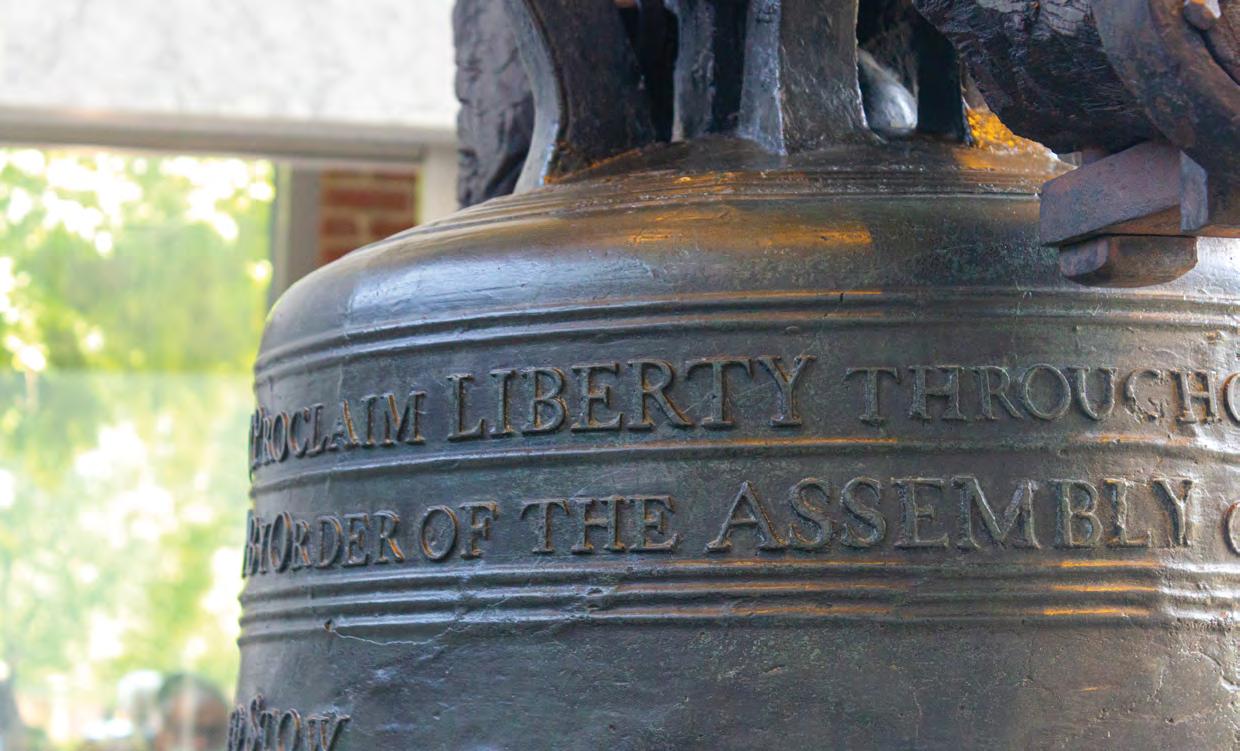
February 26, 2025
Patrick Henry: Historic St. John’s Church, Historic Hanover Courthouse & Old Stone Jail, and Patrick Henry’s Scotchtown
March 25–26, 2025
Virginia’s Blue Ridge: Floyd and Franklin Counties and Roanoke (overnight trip)
Visit The Blue Ridge Institute & Museum of Ferrum College, The Eleanor D. Wilson Museum at Hollins University, The O. Winston Link Museum, Roanoke History Museum, and have lunch at the famed Floyd Country Store
April 9, 2025
Lee’s Retreat: Sailor’s Creek Battlefield State Park, American Civil War Museum-Appomattox, and Appomattox Court House National Historical Park
May 1–3, 2025
Philadelphia, Pa.: America’s 250th
Visit the William Paca House & Garden (Annapolis, Md.), Independence Hall, Liberty Bell Center, Federal Reserve Bank of Philadelphia, National Constitution Center, Museum of the American Revolution, and The Elfreth’s Alley Museum
428 N Arthur Ashe Boulevard
Richmond, Virginia 23220
VirginiaHistory.org
Facebook.com/ VirginiaHistory
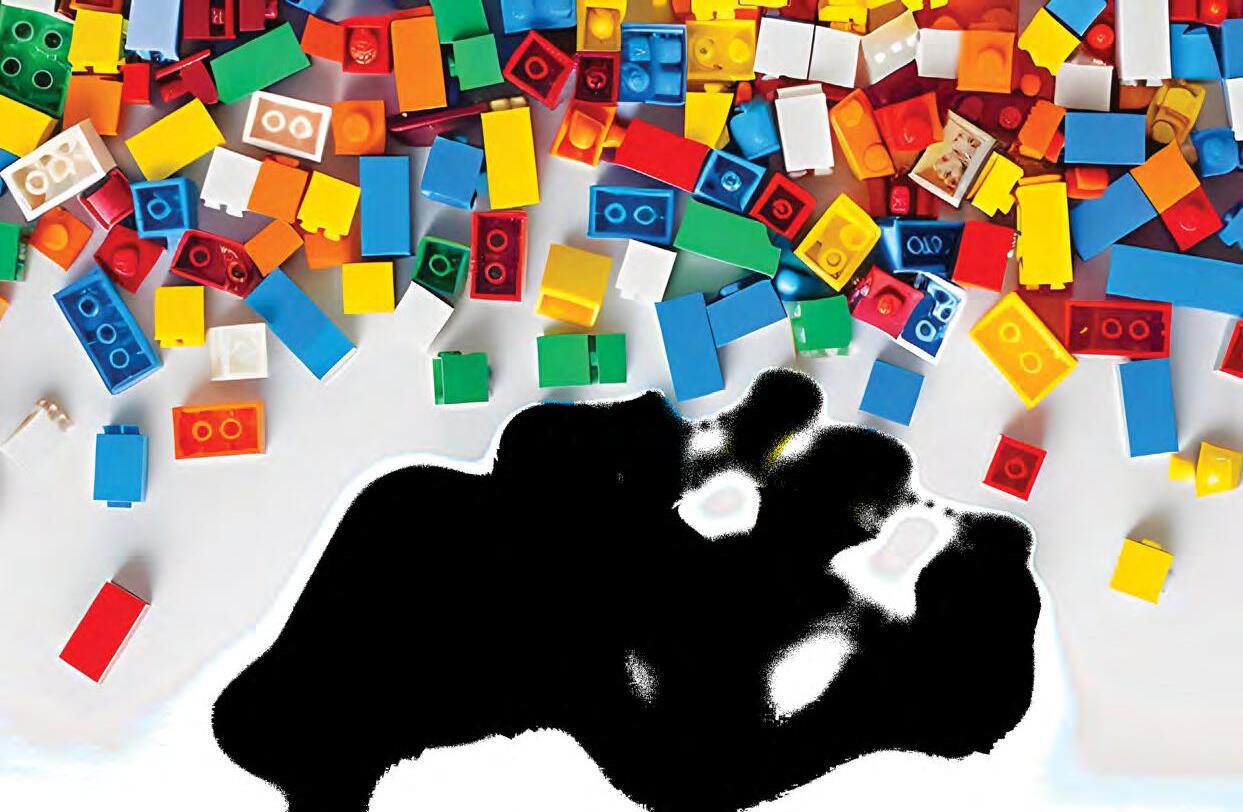

Instagram.com/ VirginiaHistory
Opening October 19, 2024
Celebrating the arrival of The LEGO Group in Virginia, Traveling Bricks—one of the largest exhibits of its kind—features more than 100 models of iconic land, air, sea, and space vehicles constructed from nearly 1 million LEGO® bricks.
Learn more at VirginiaHistory.org/TravelingBricks